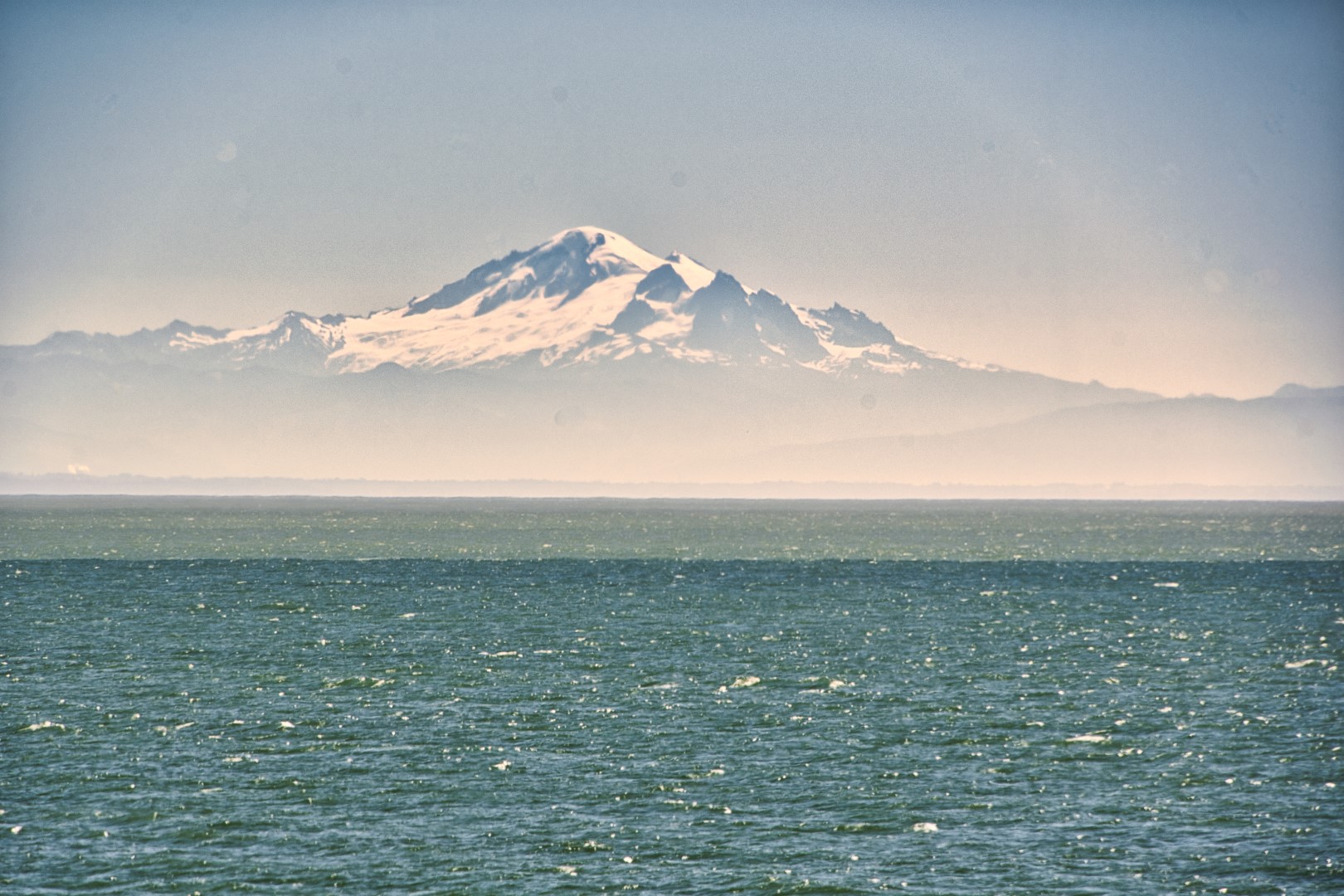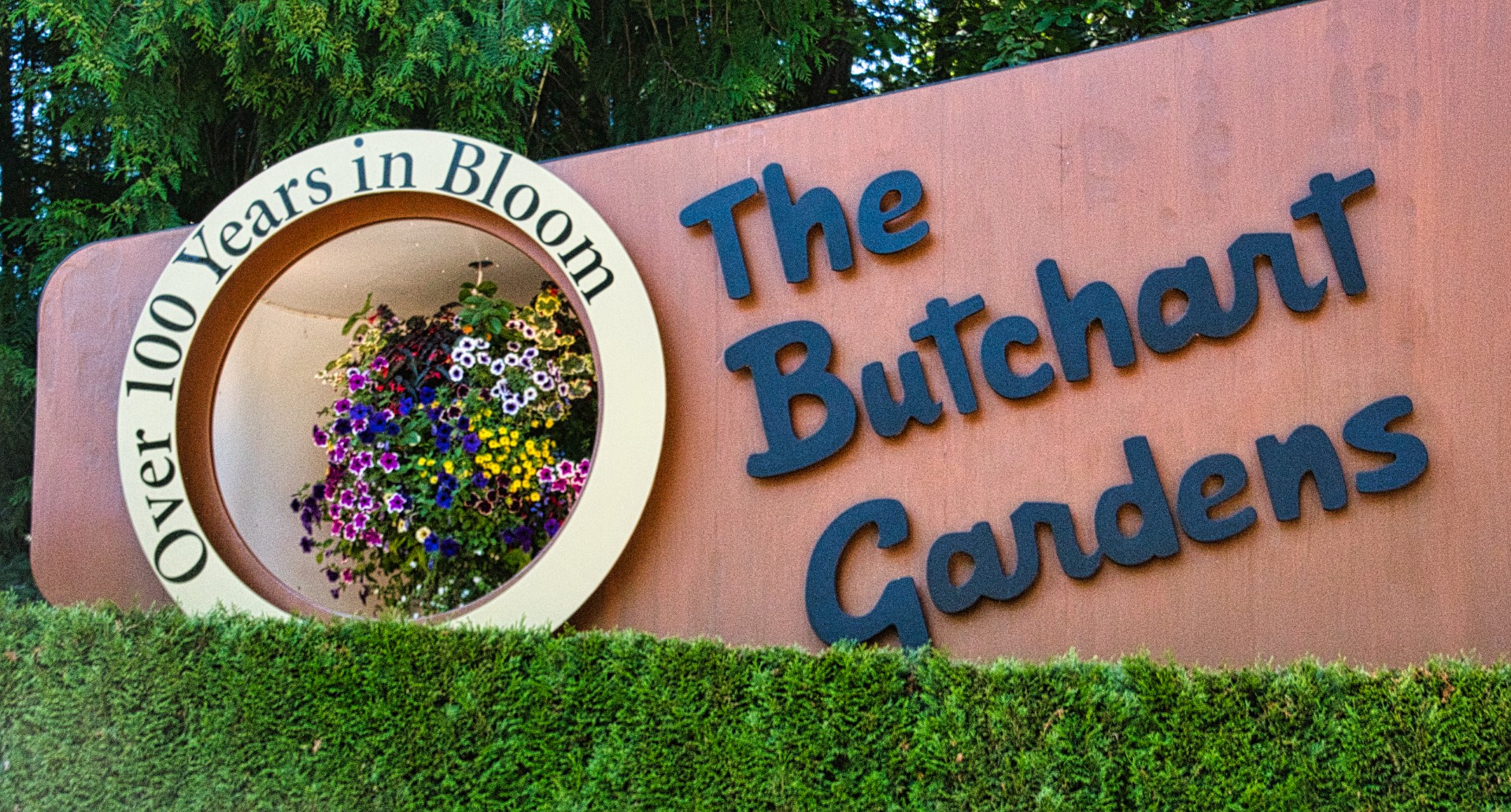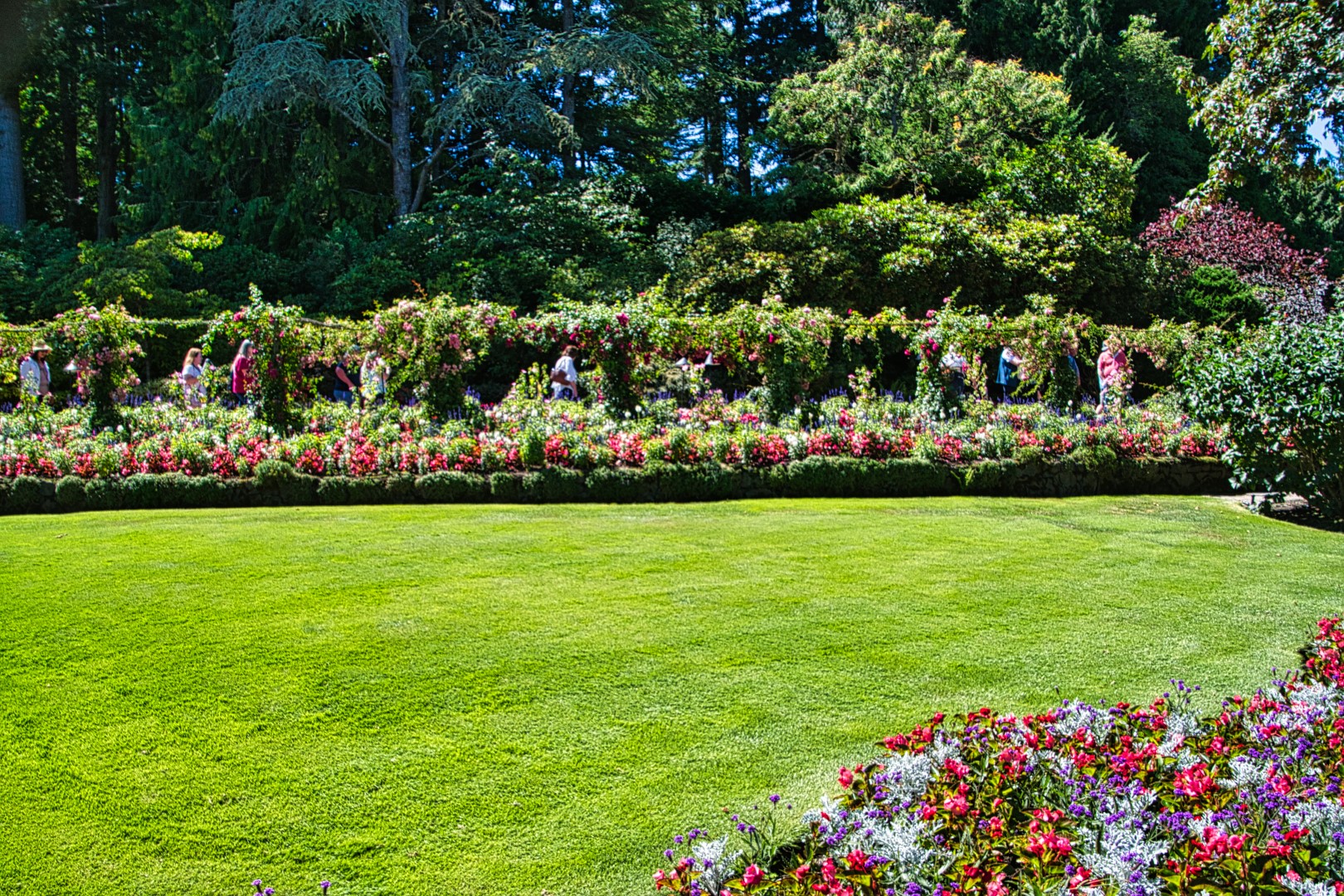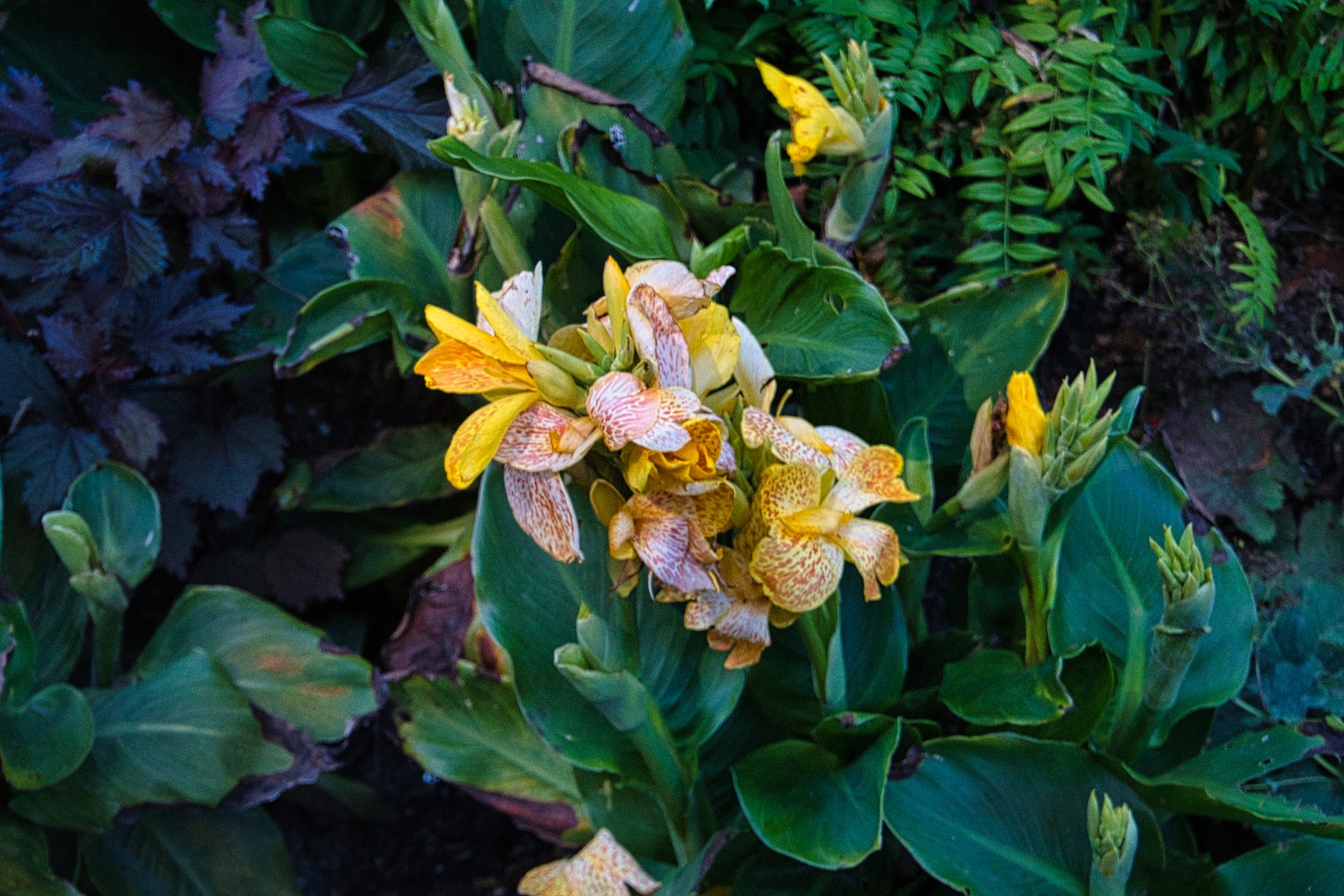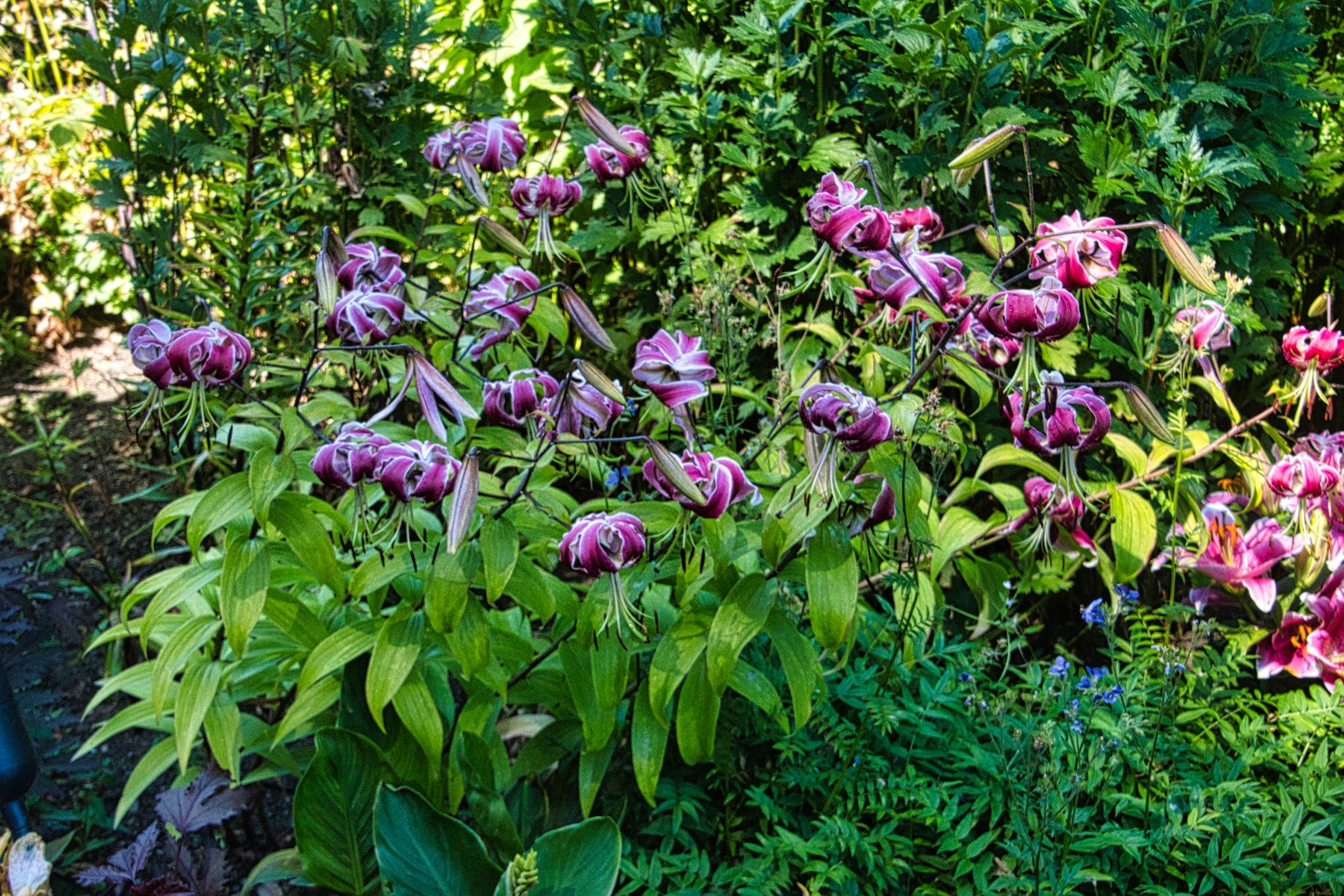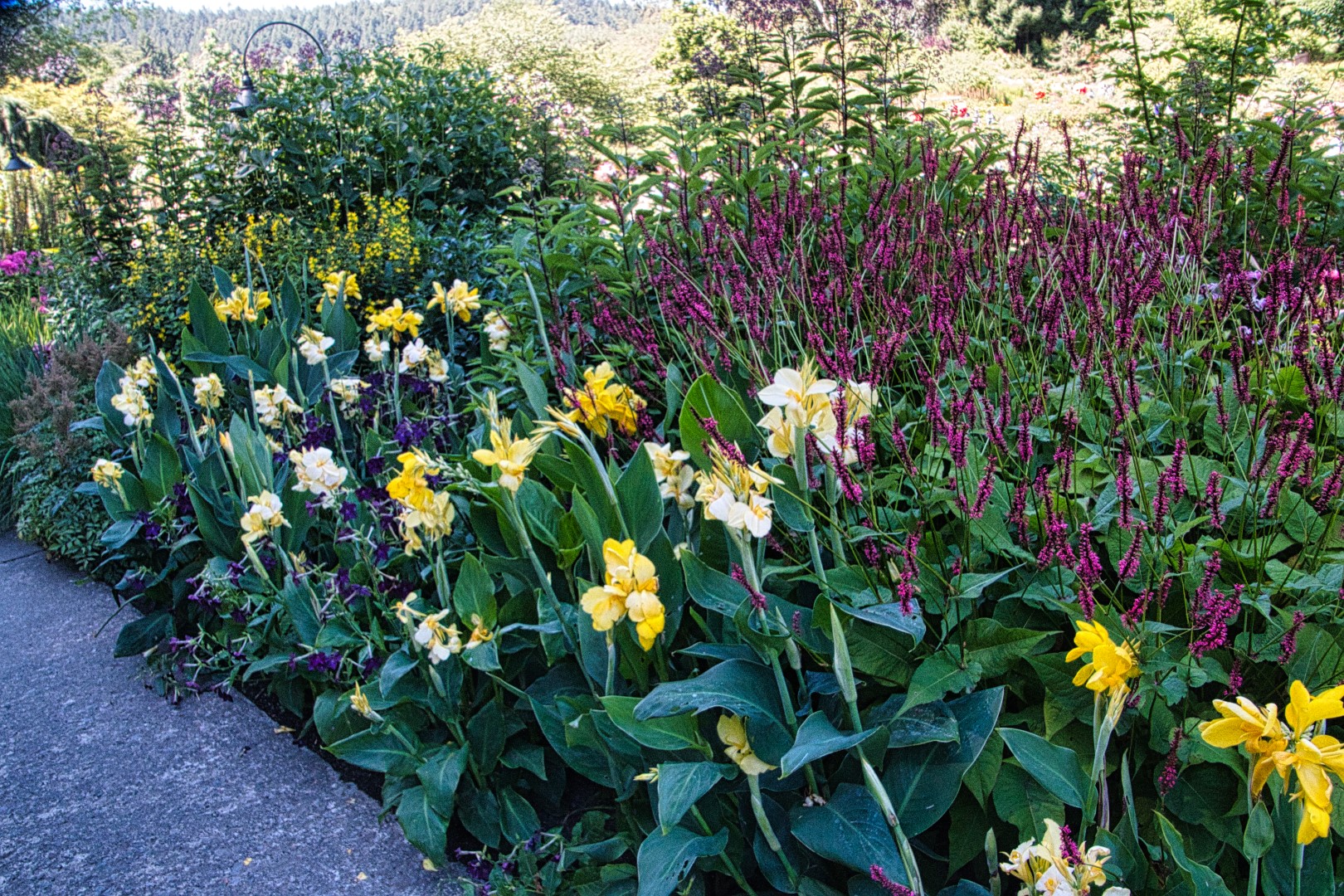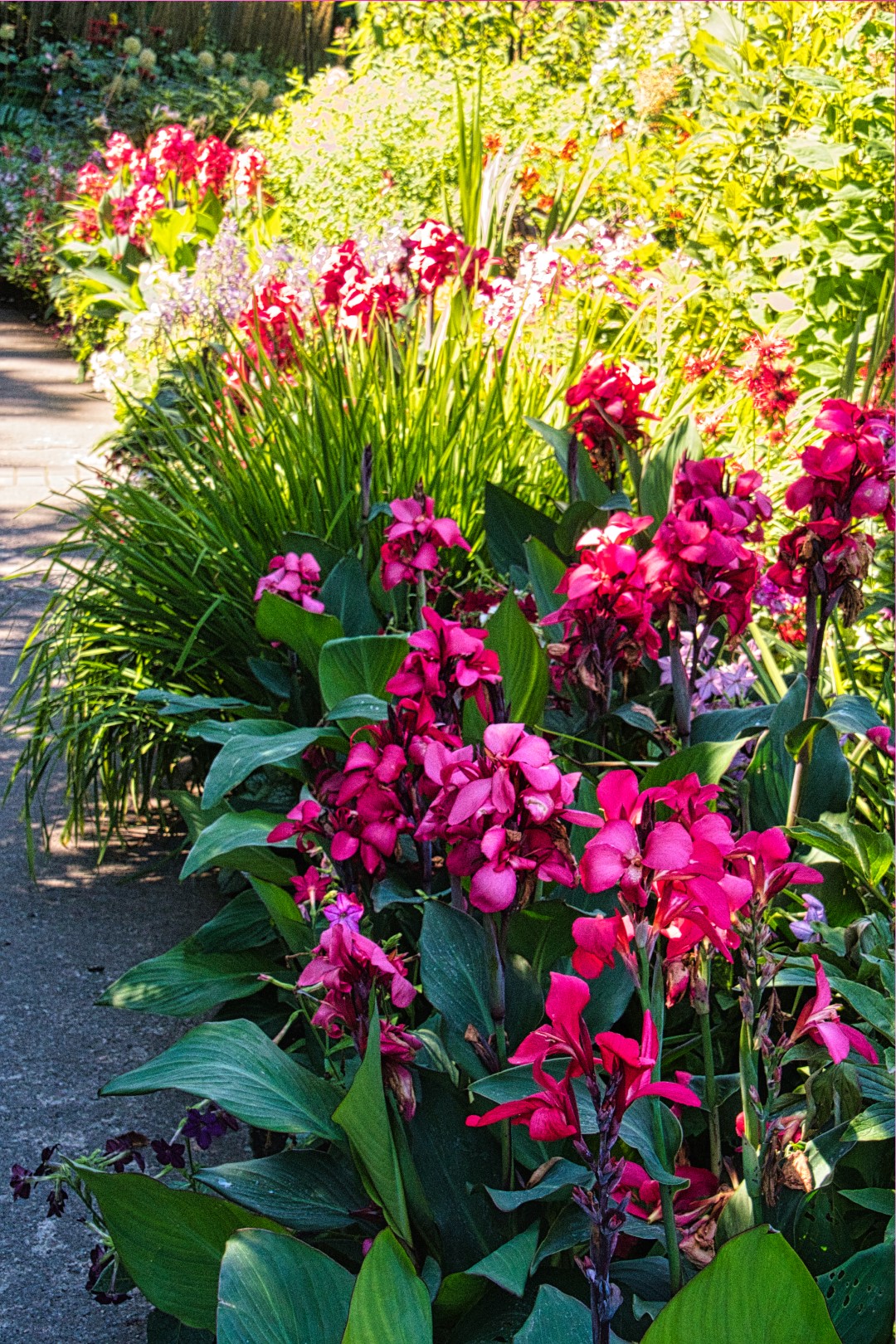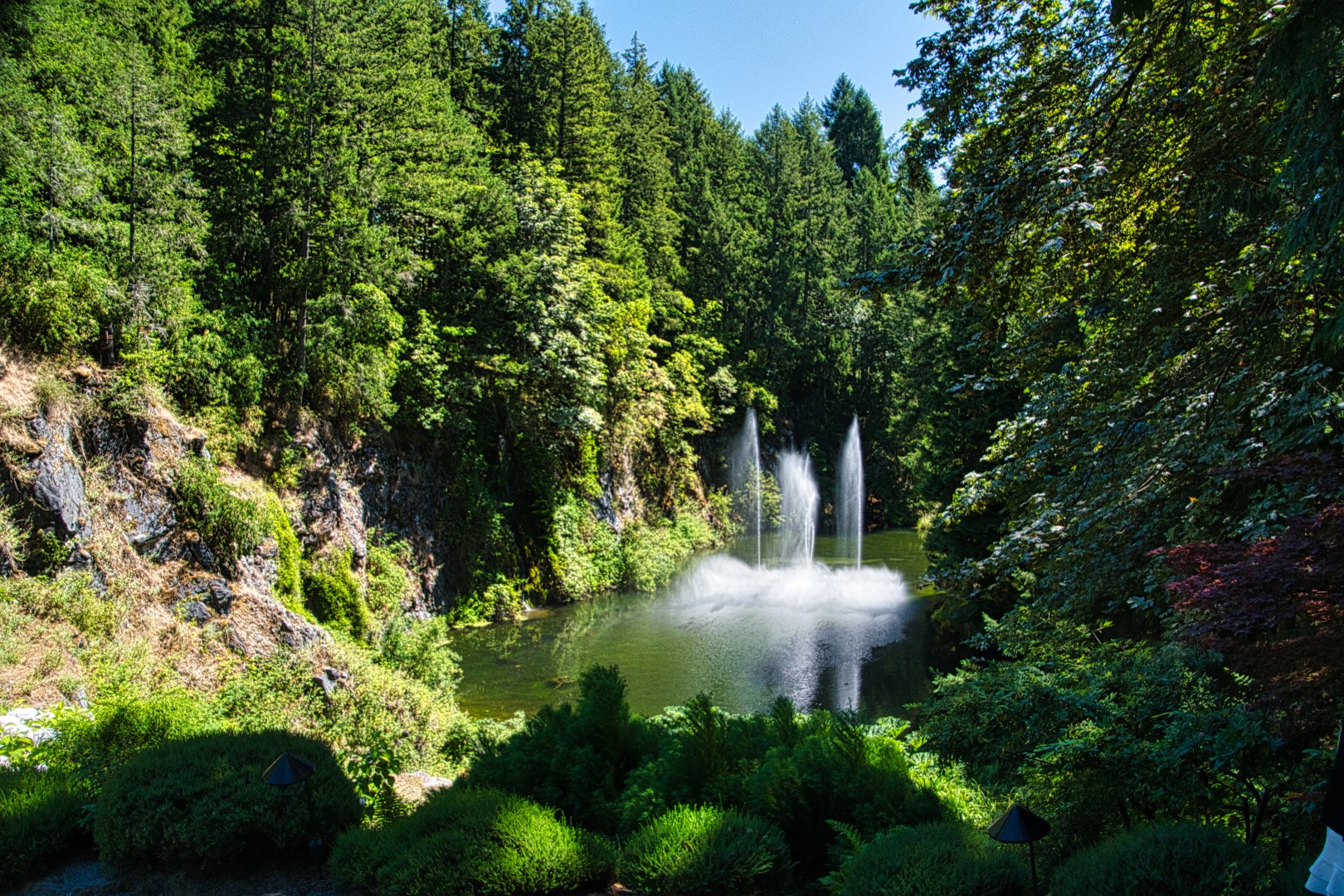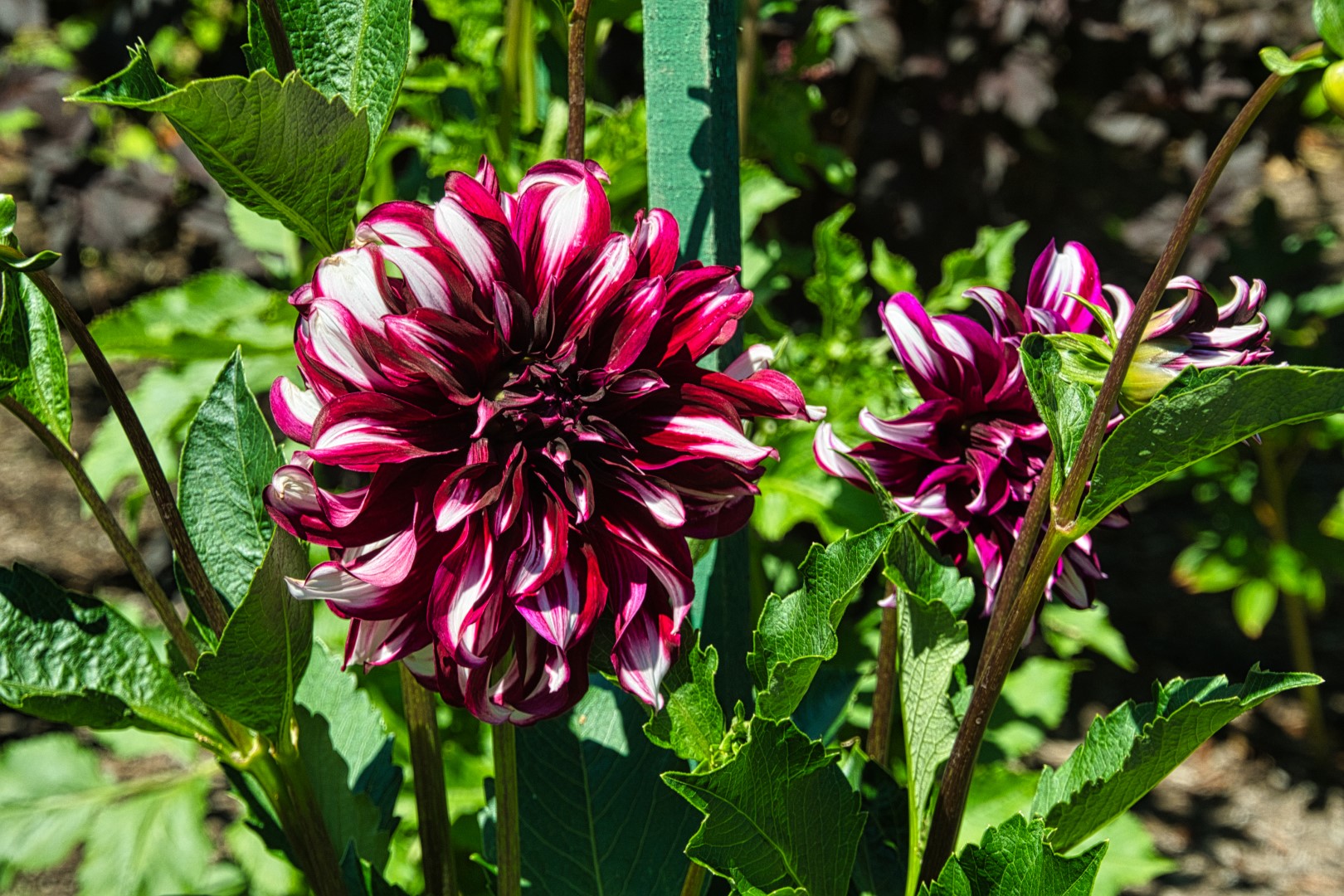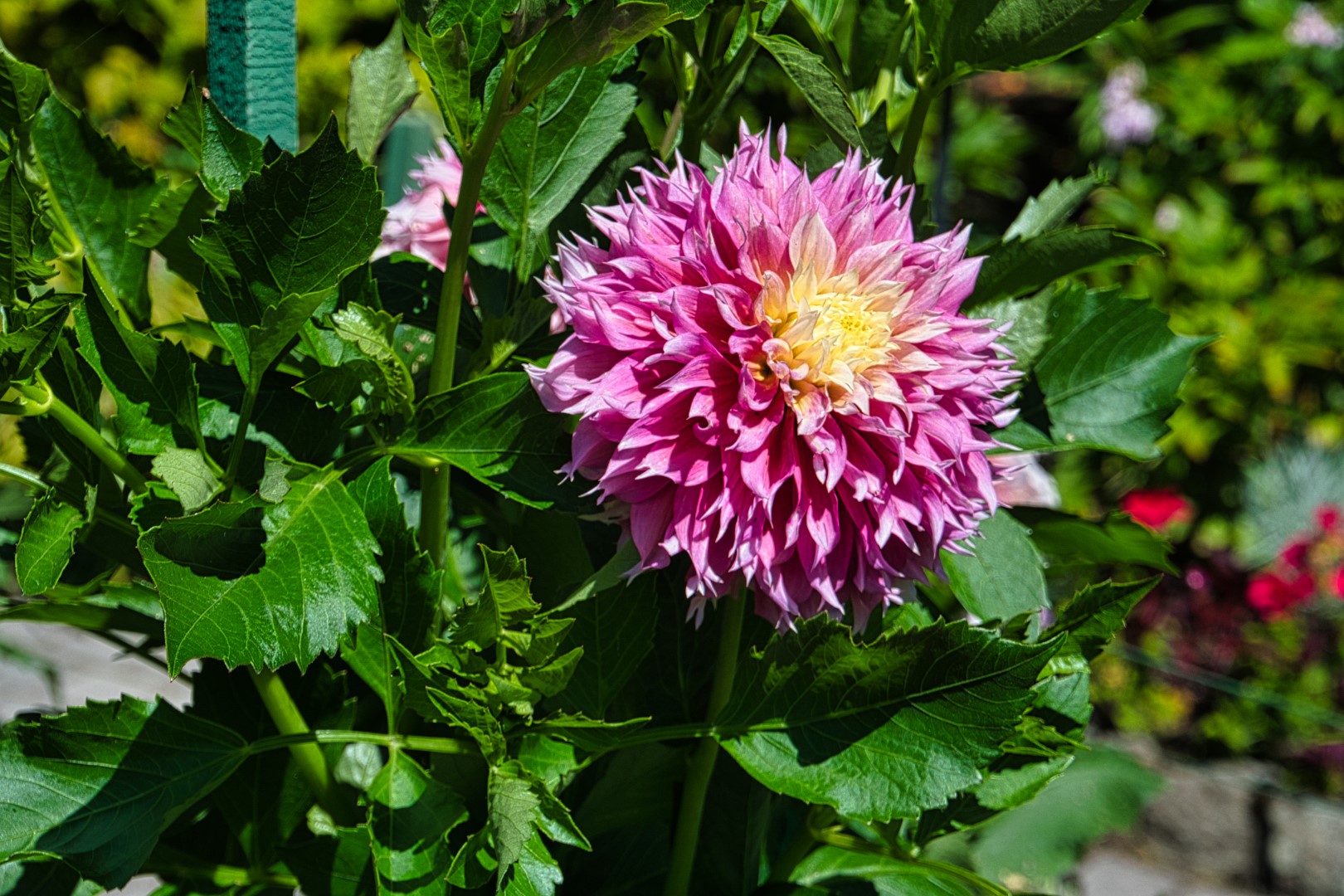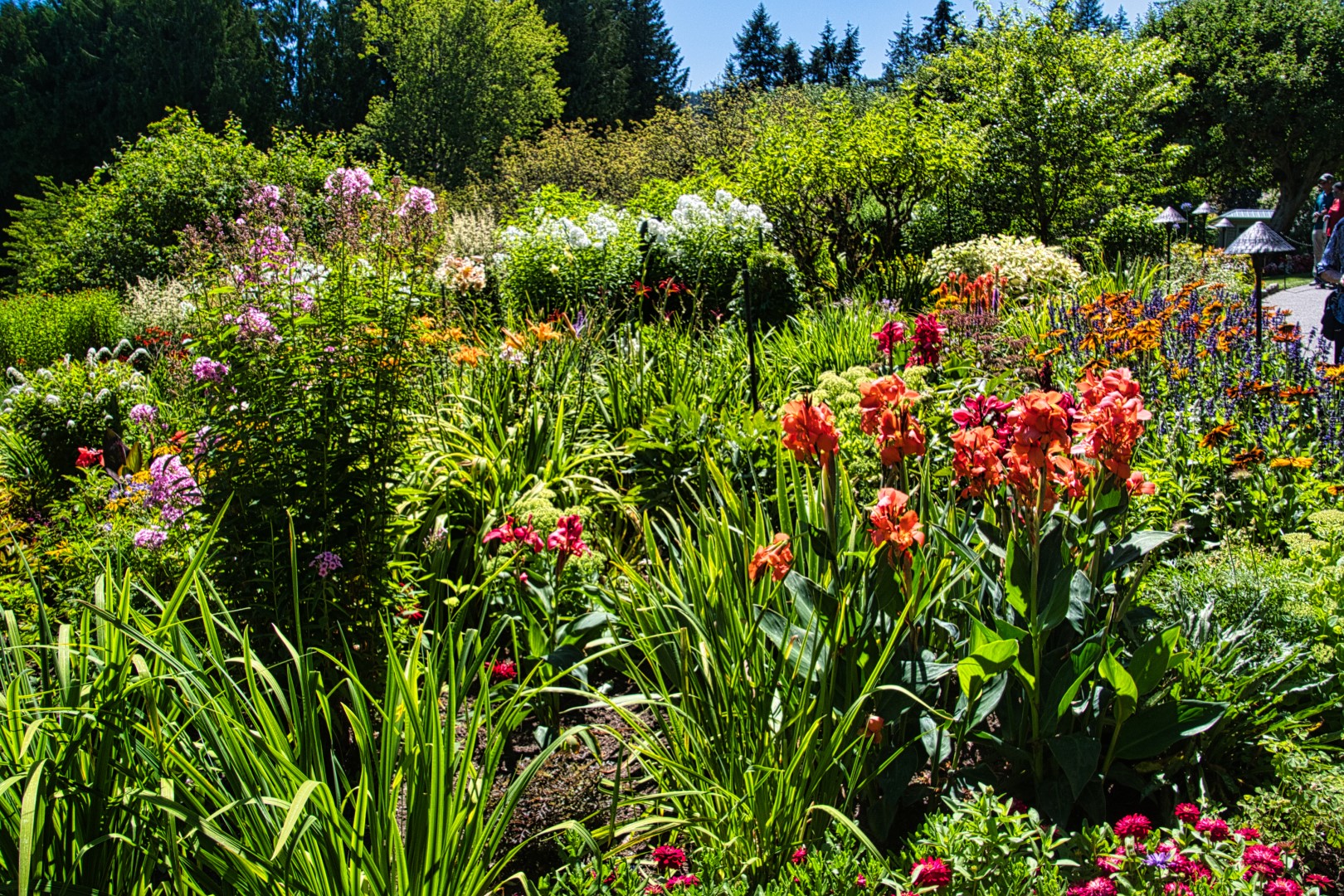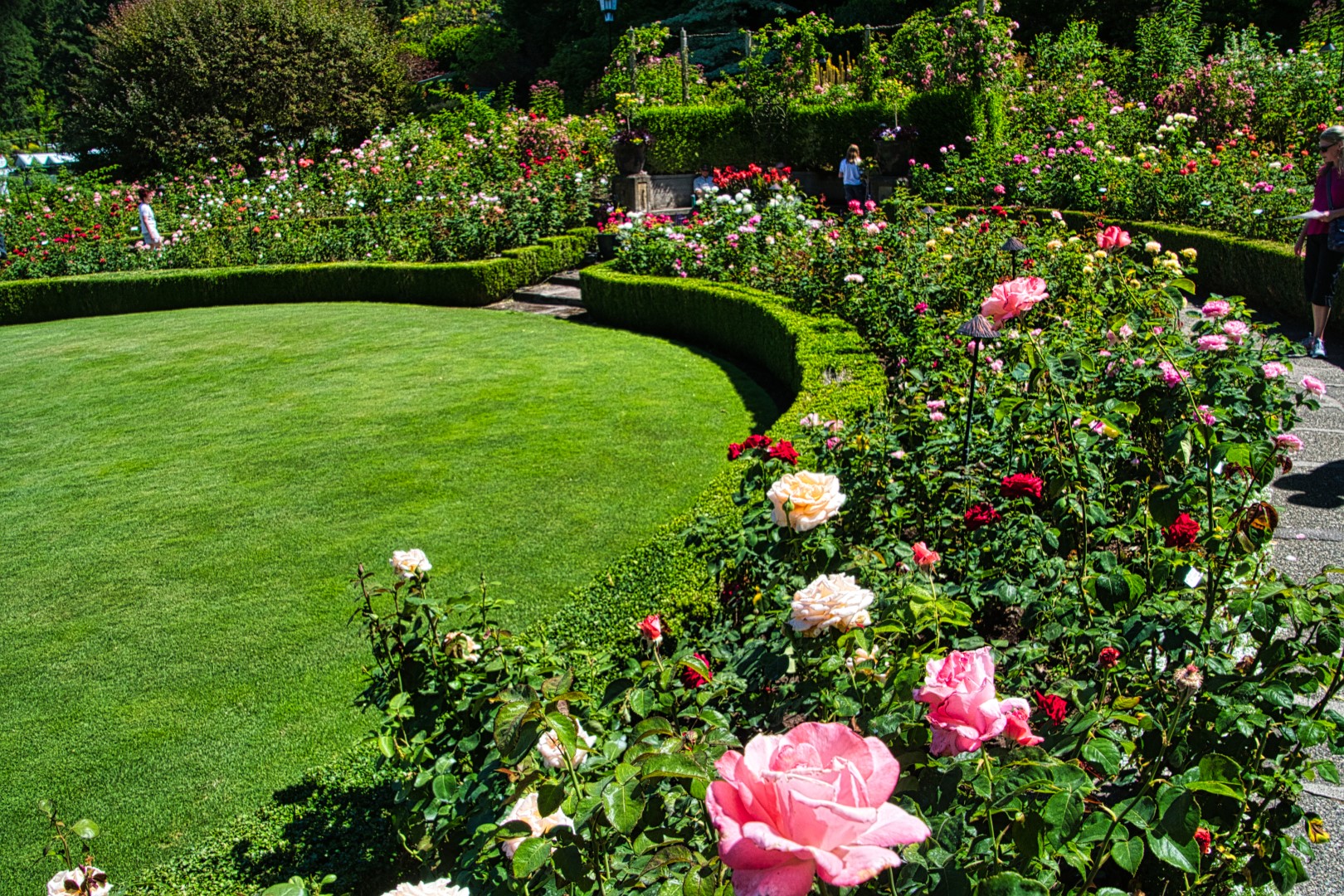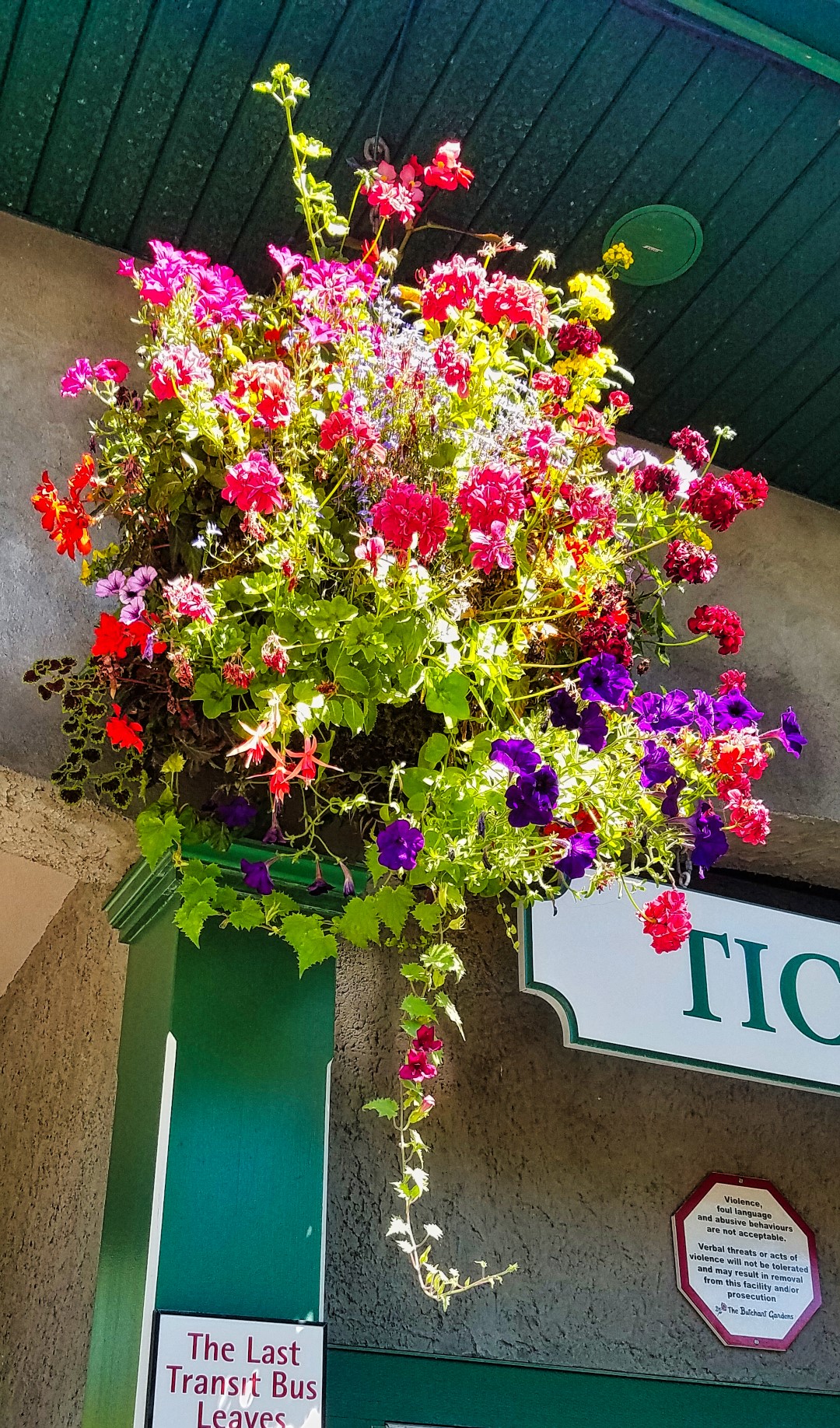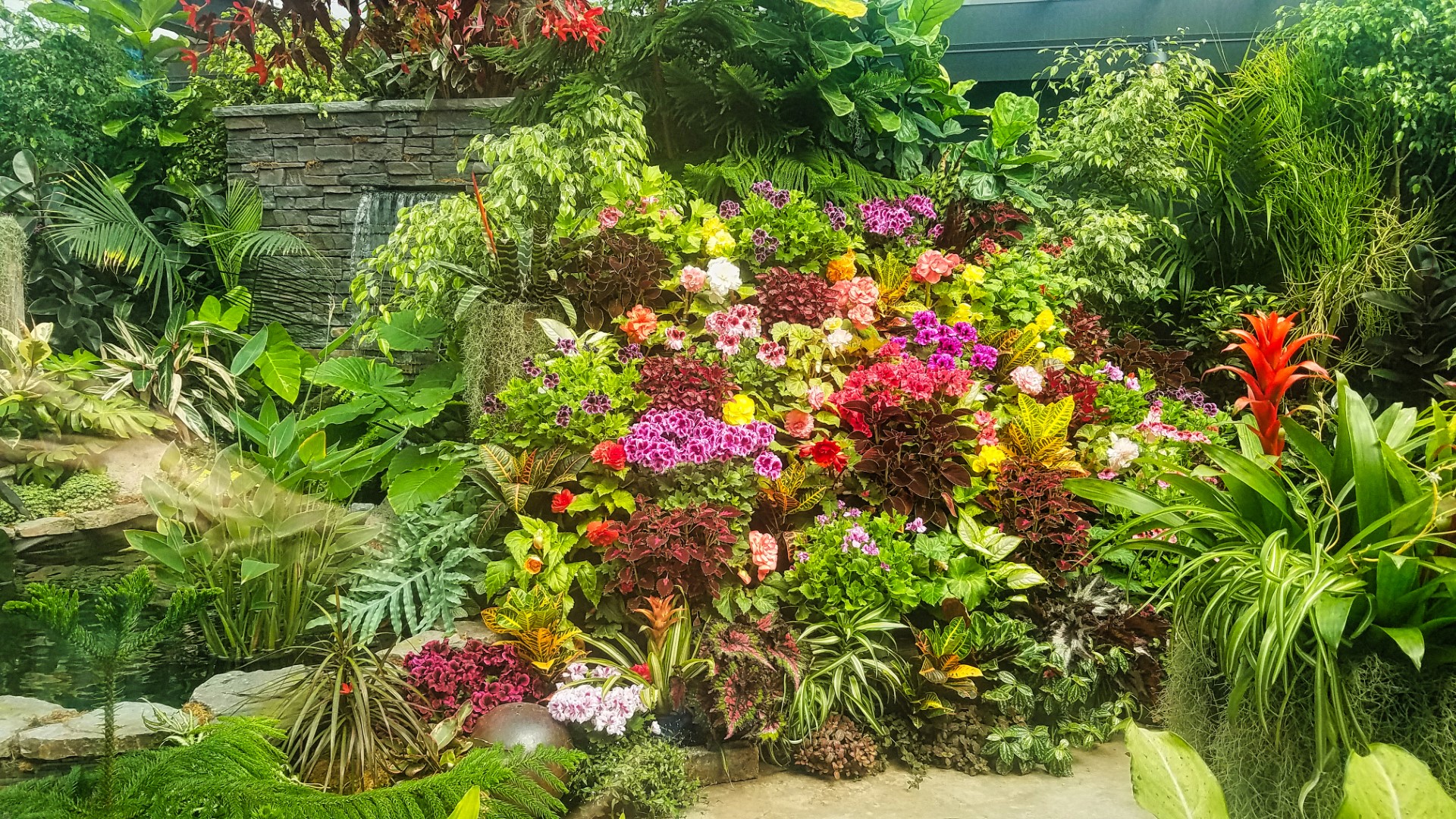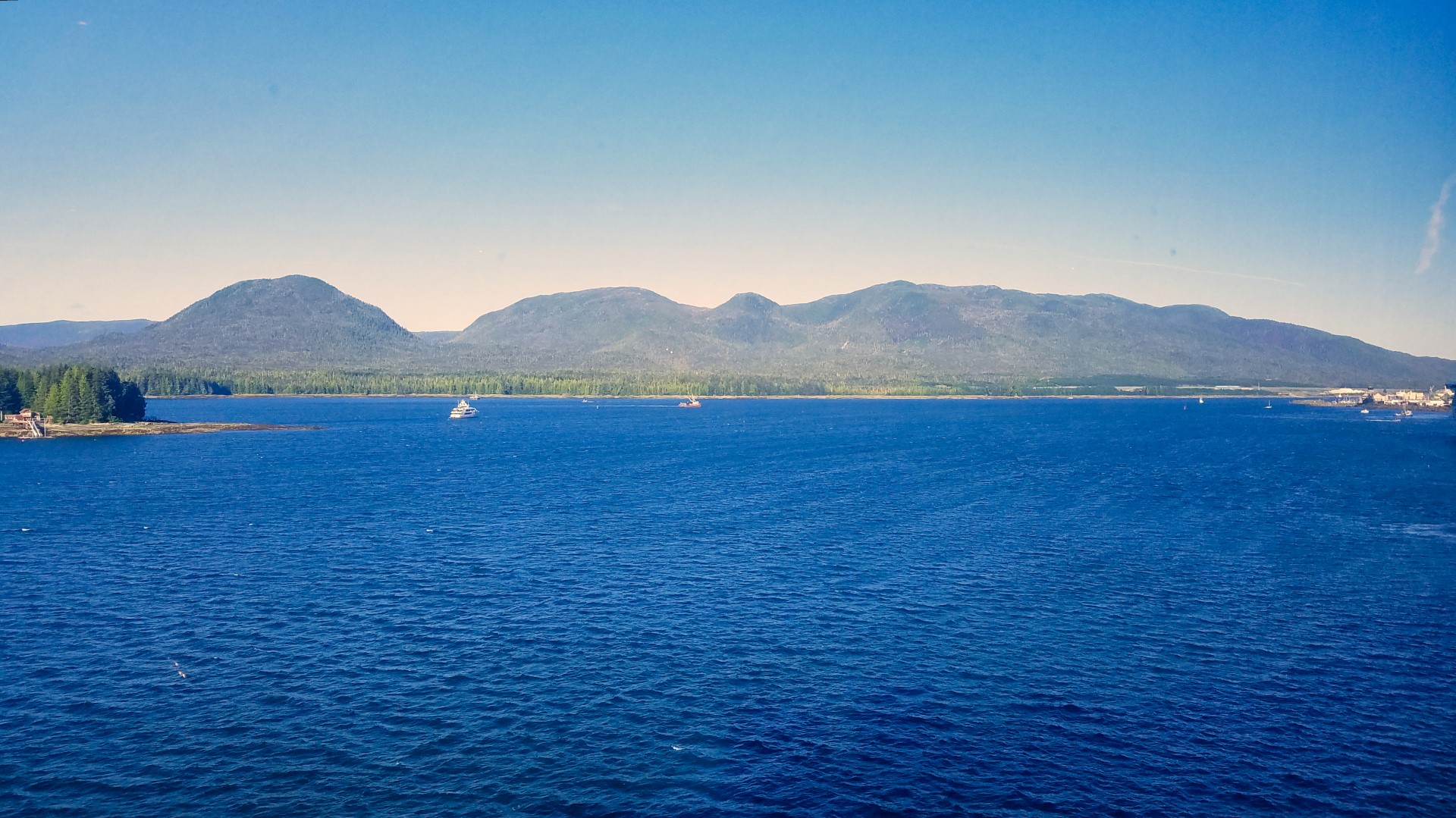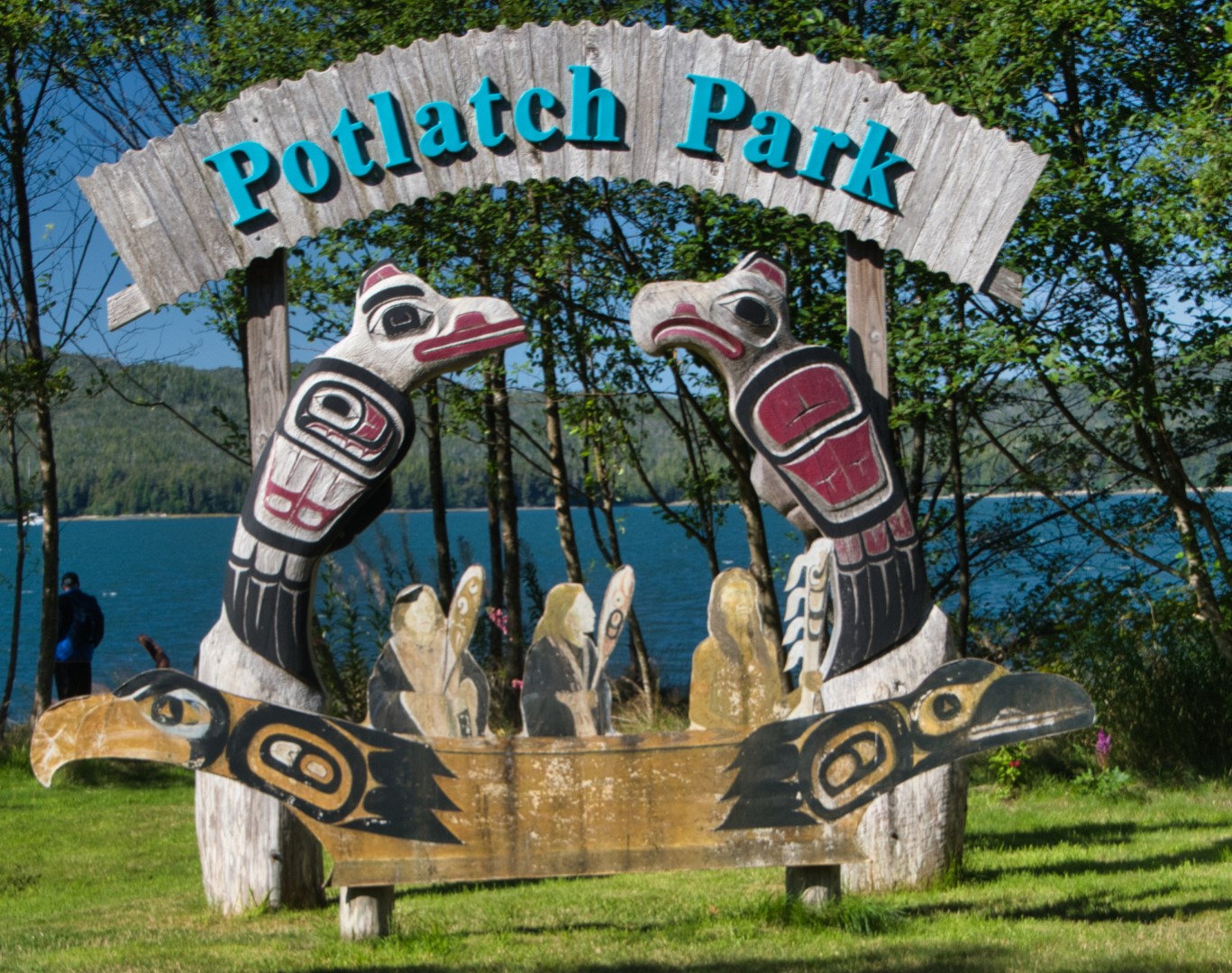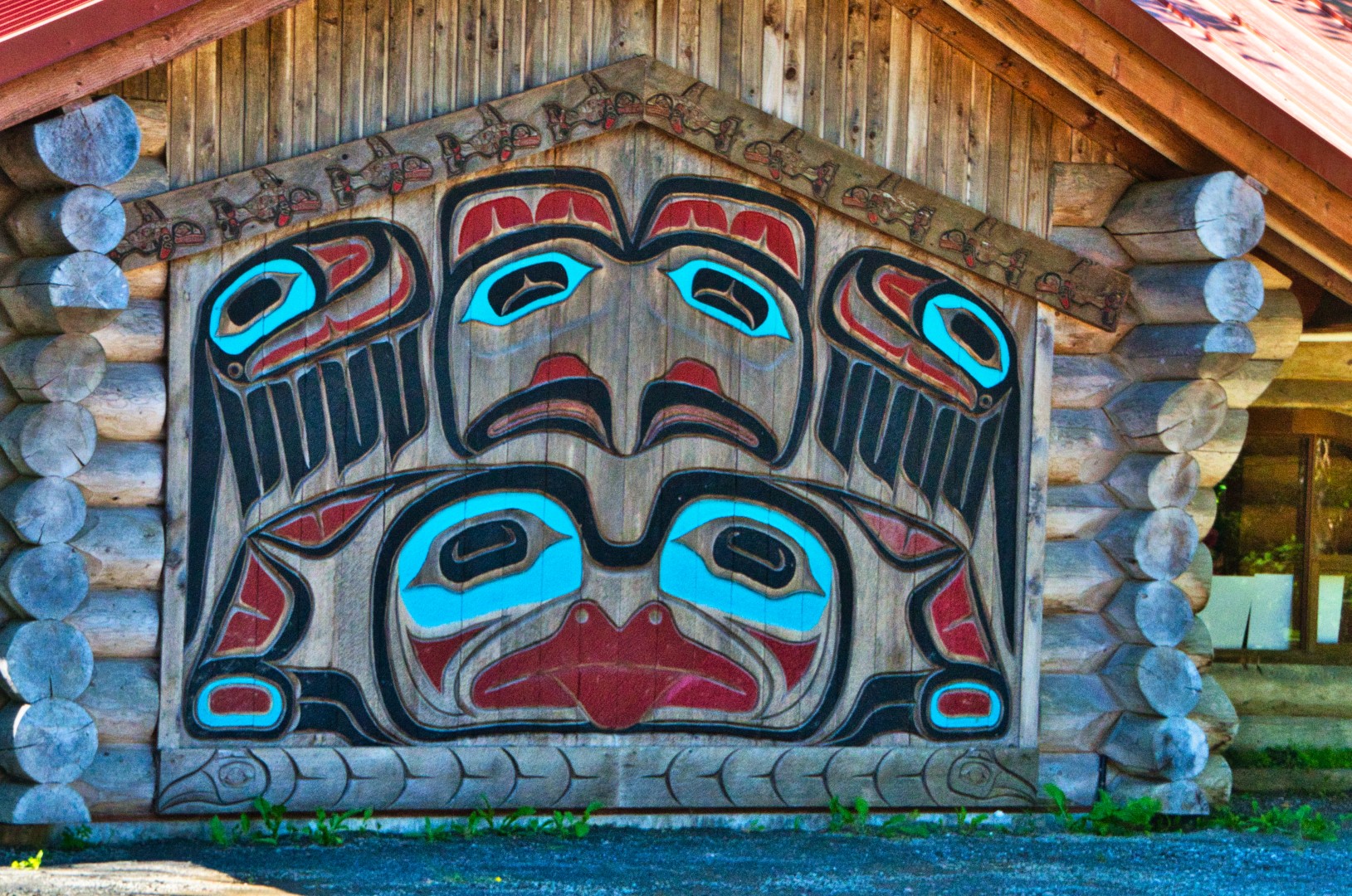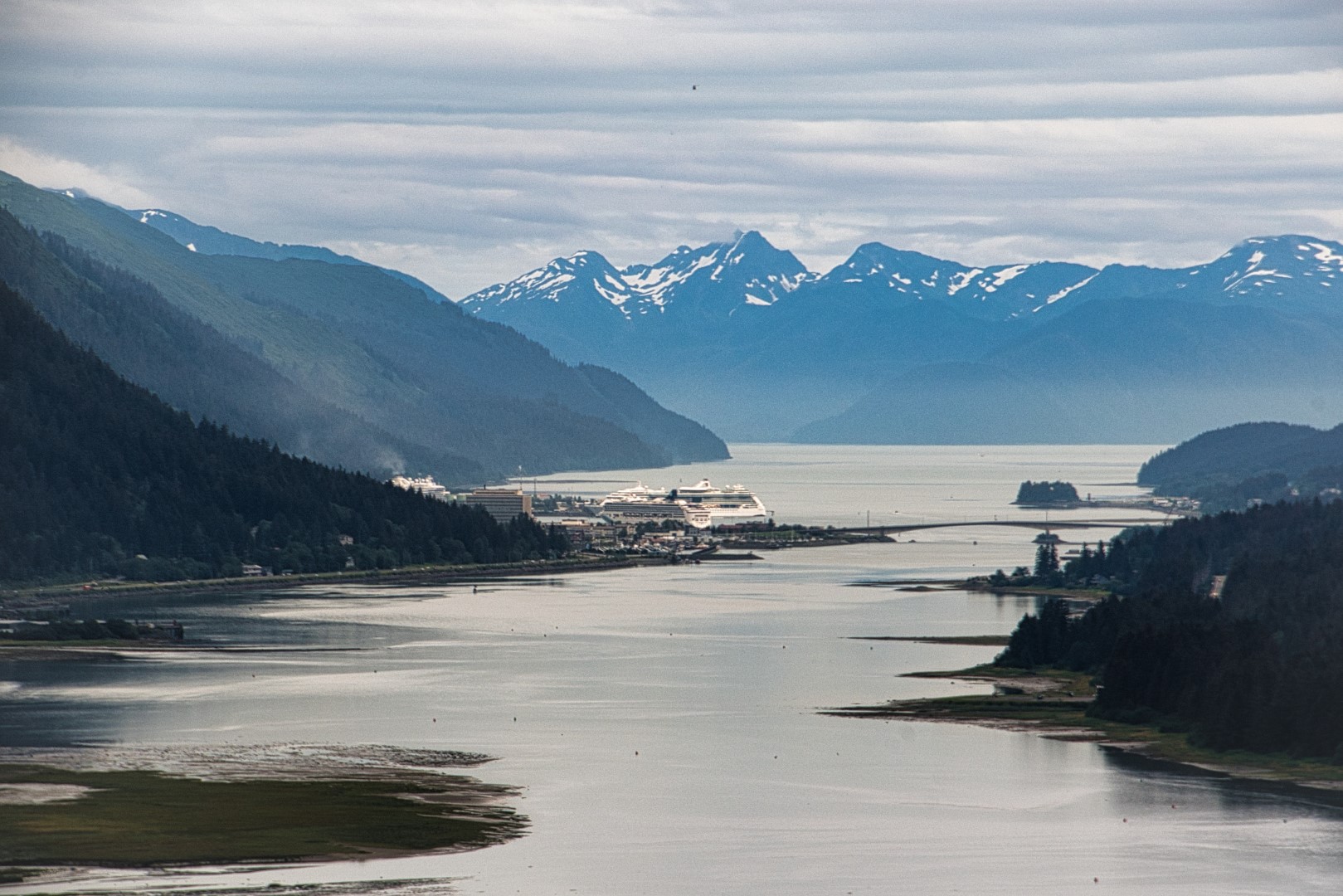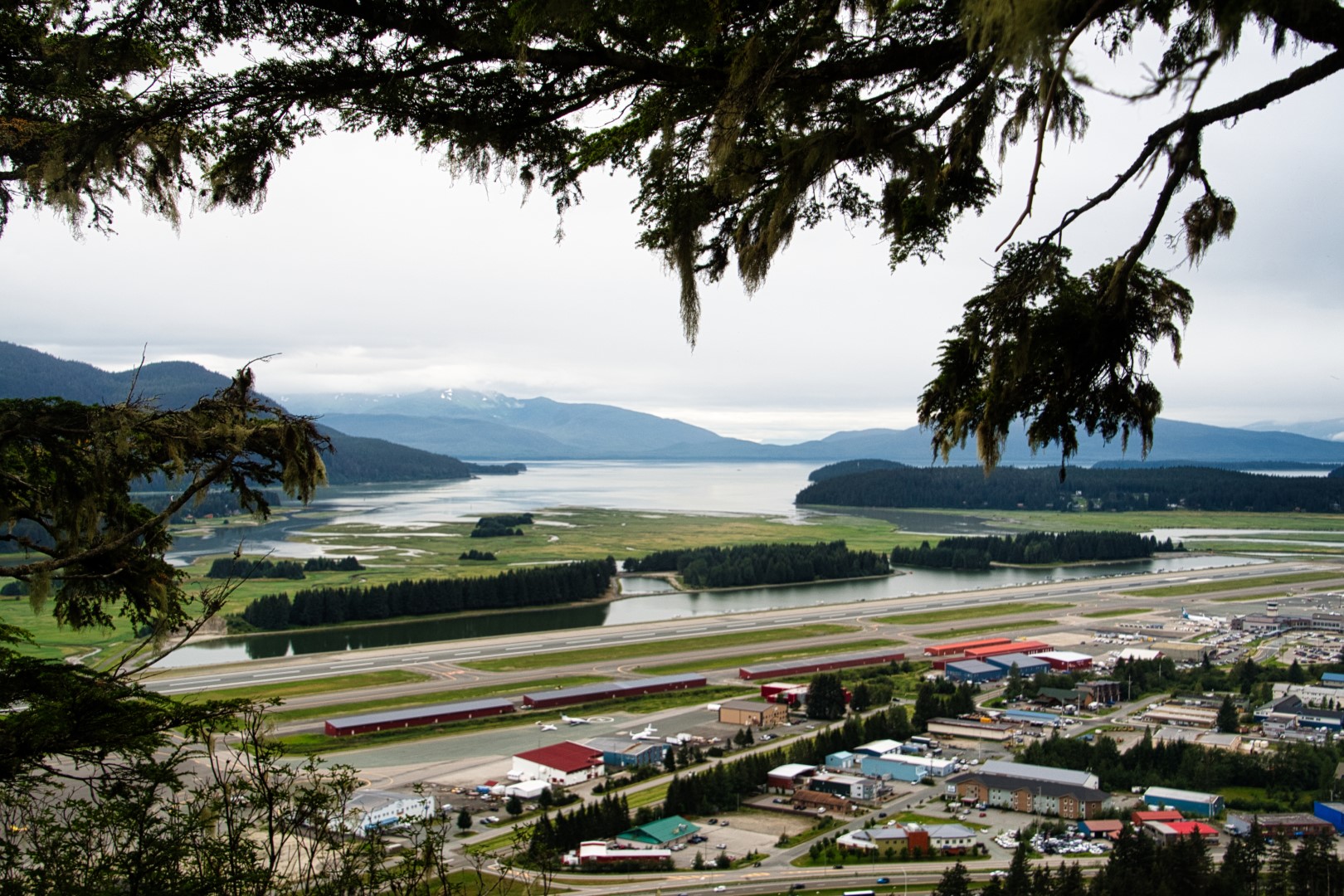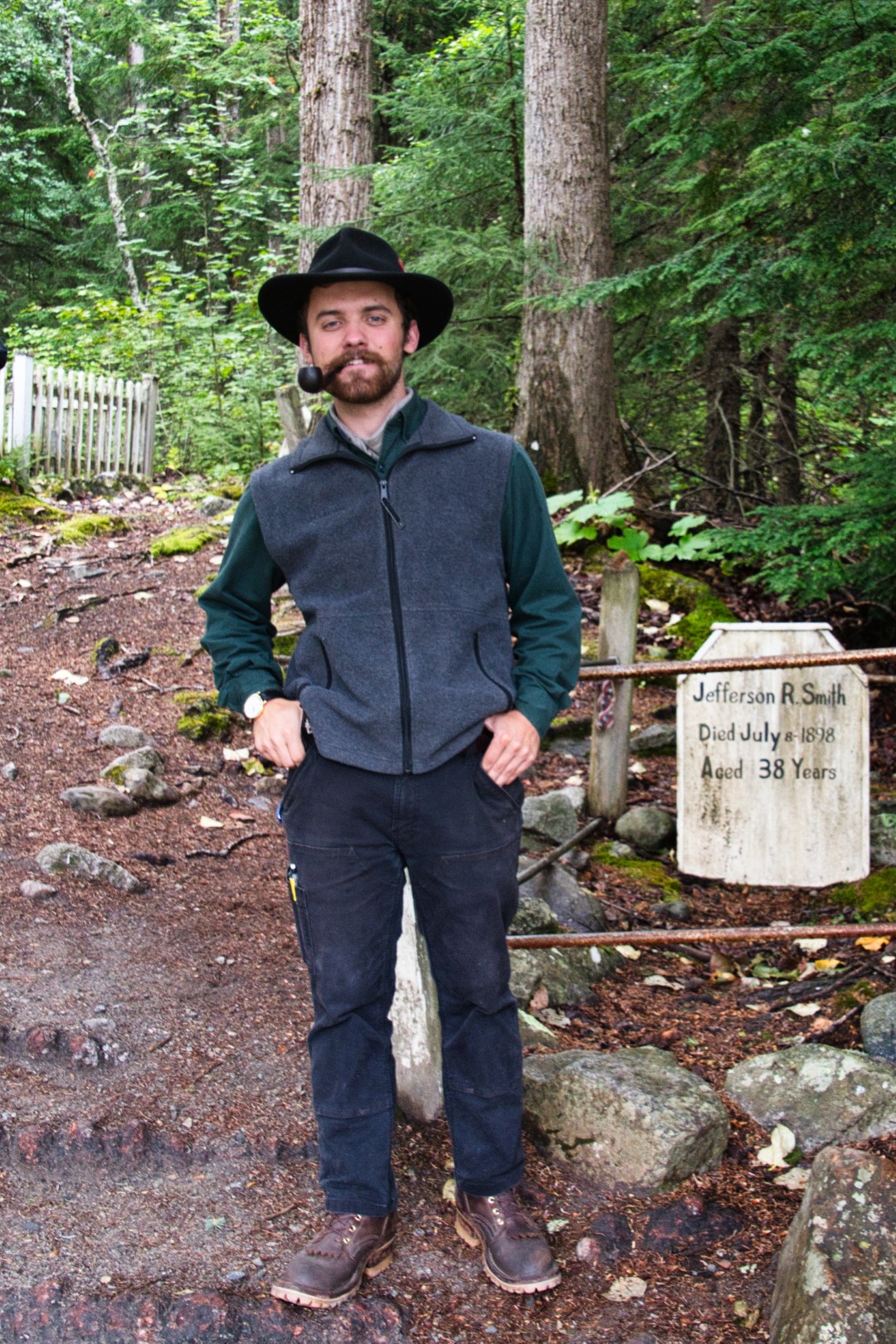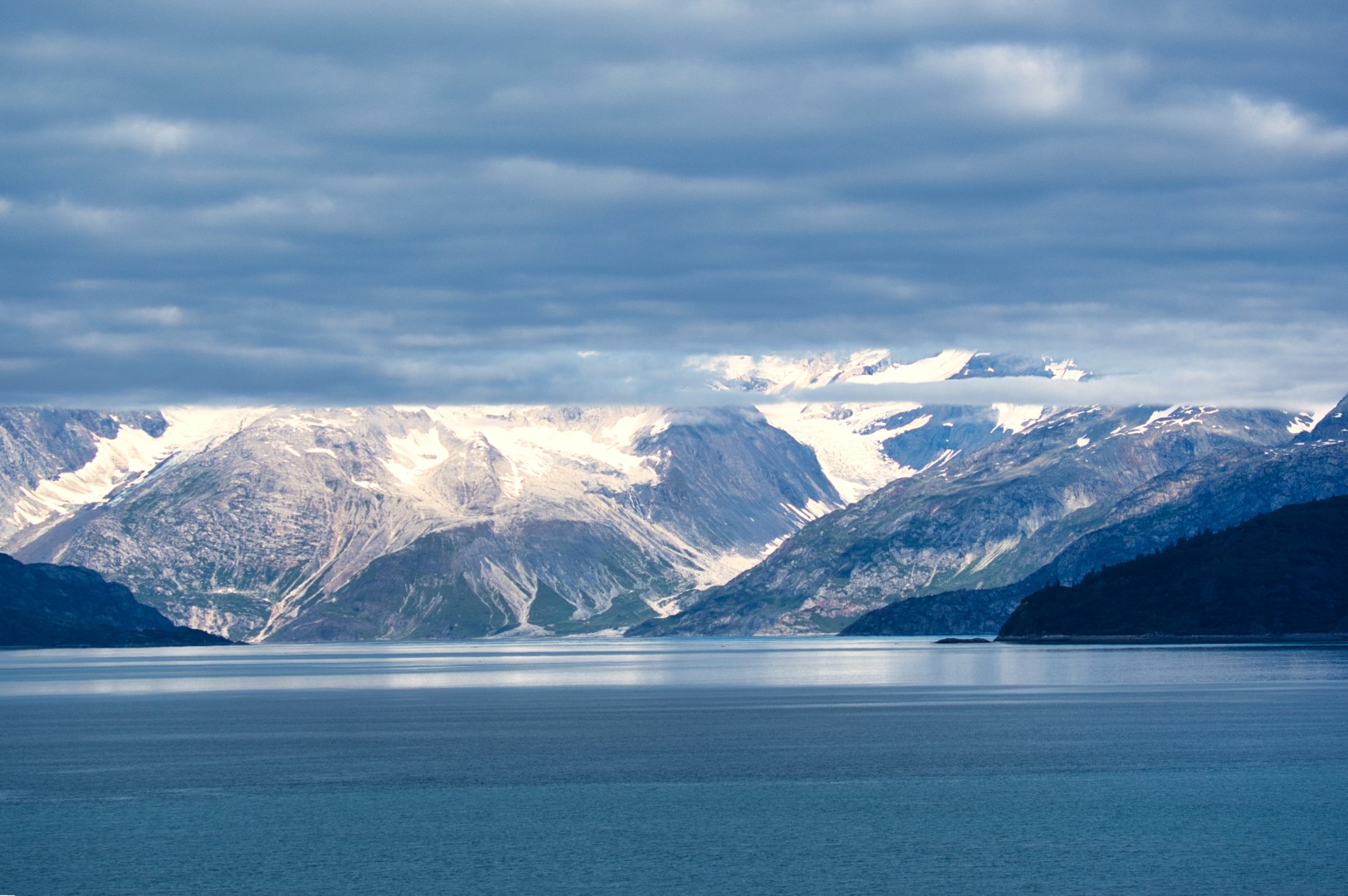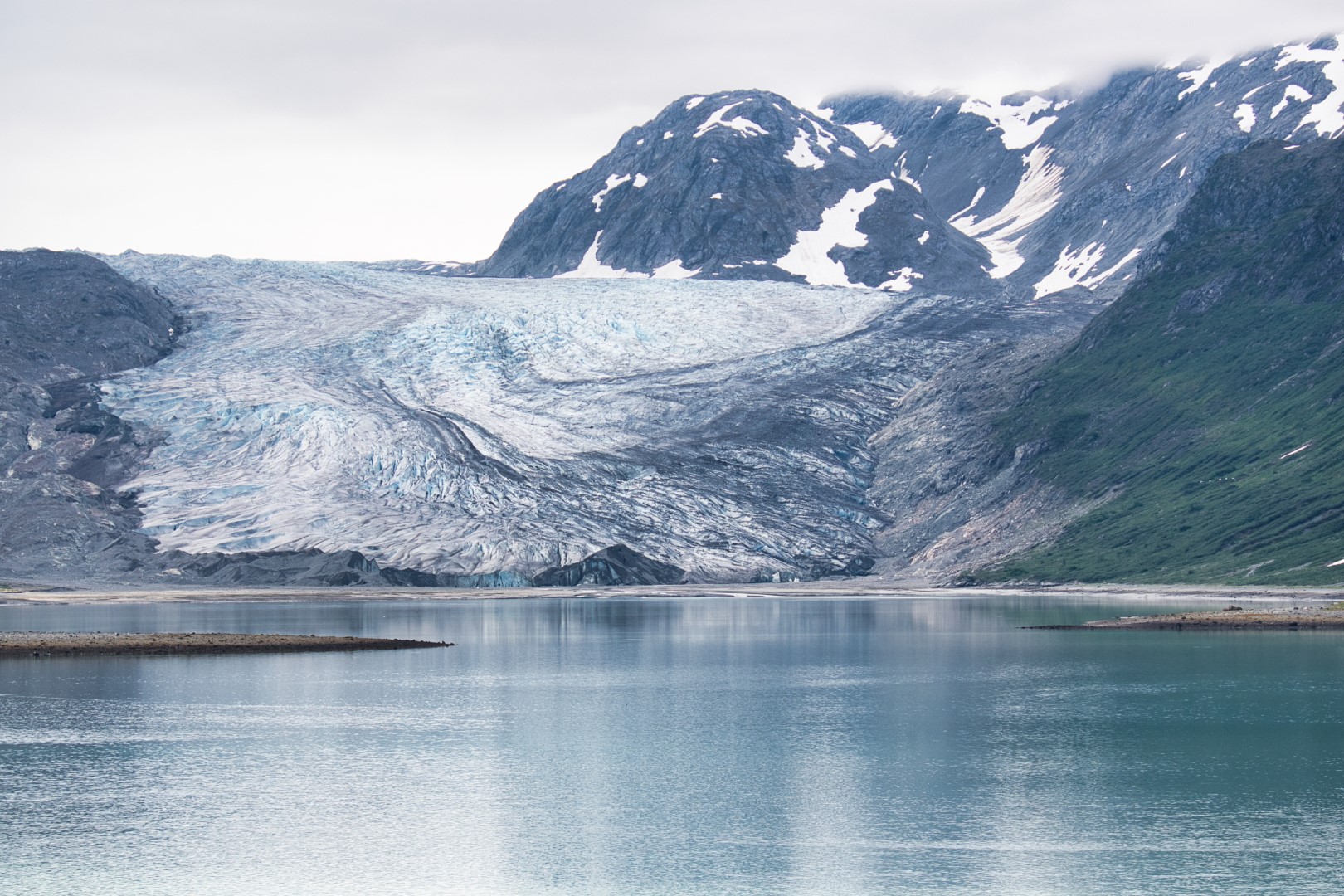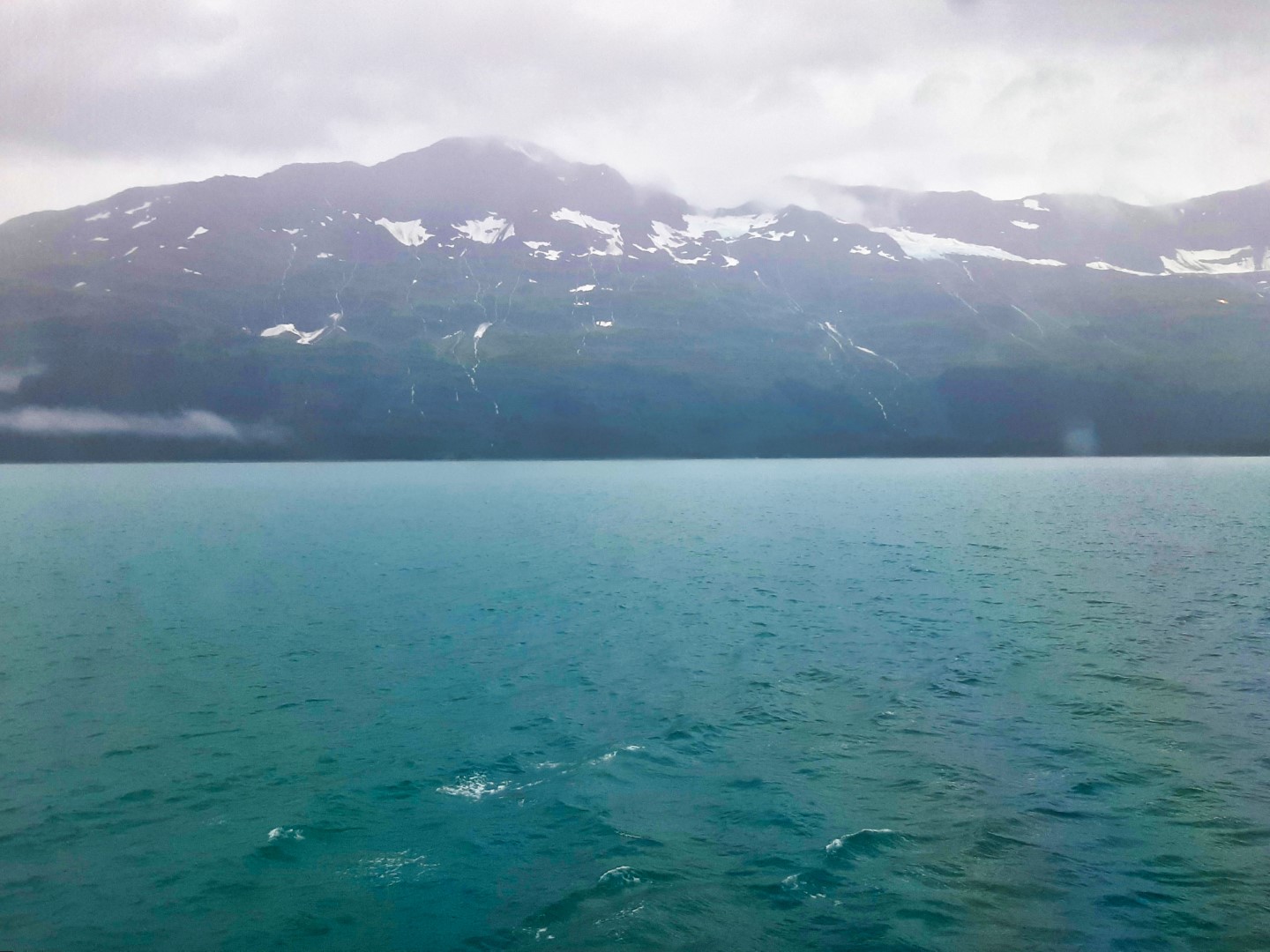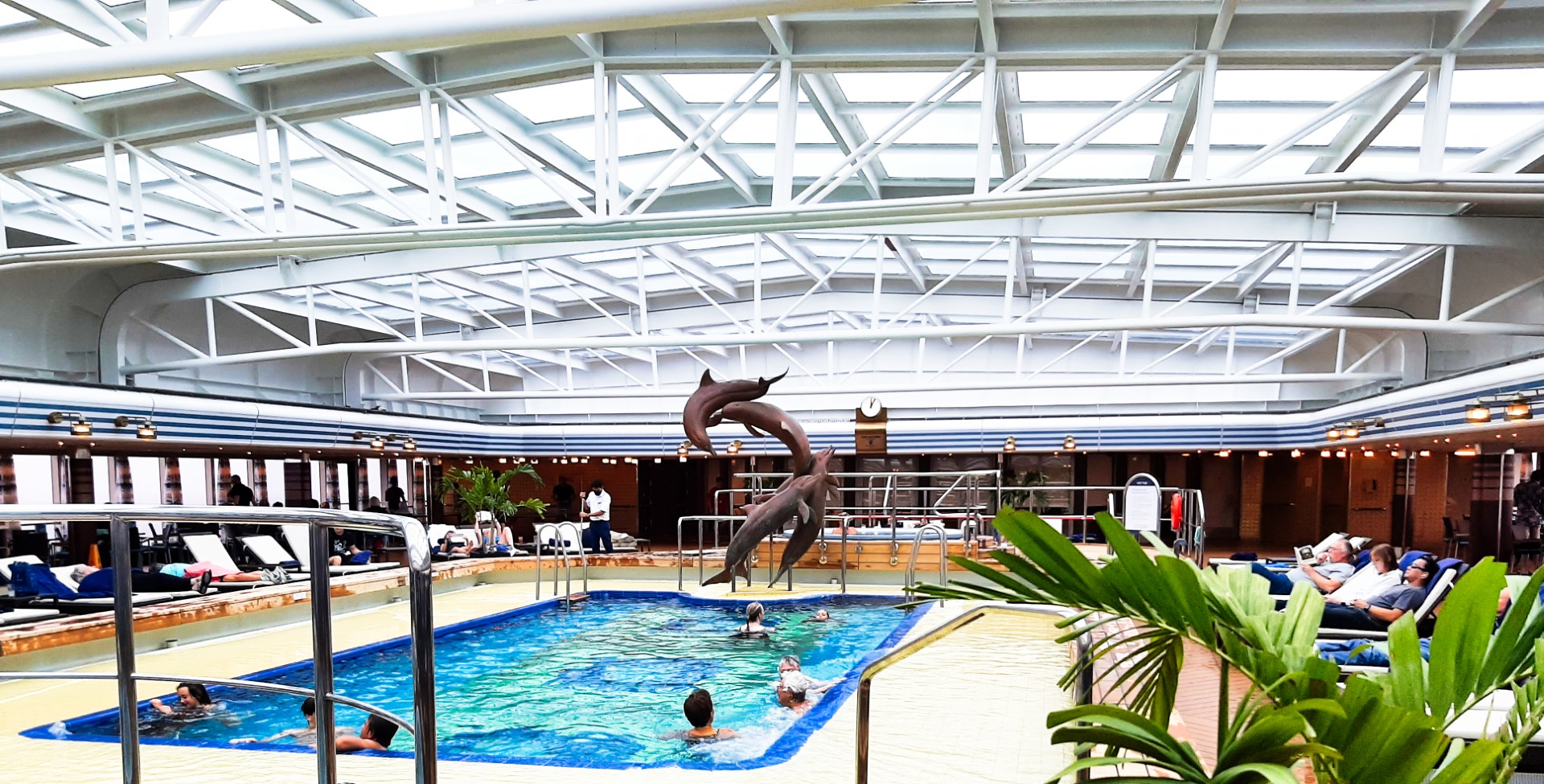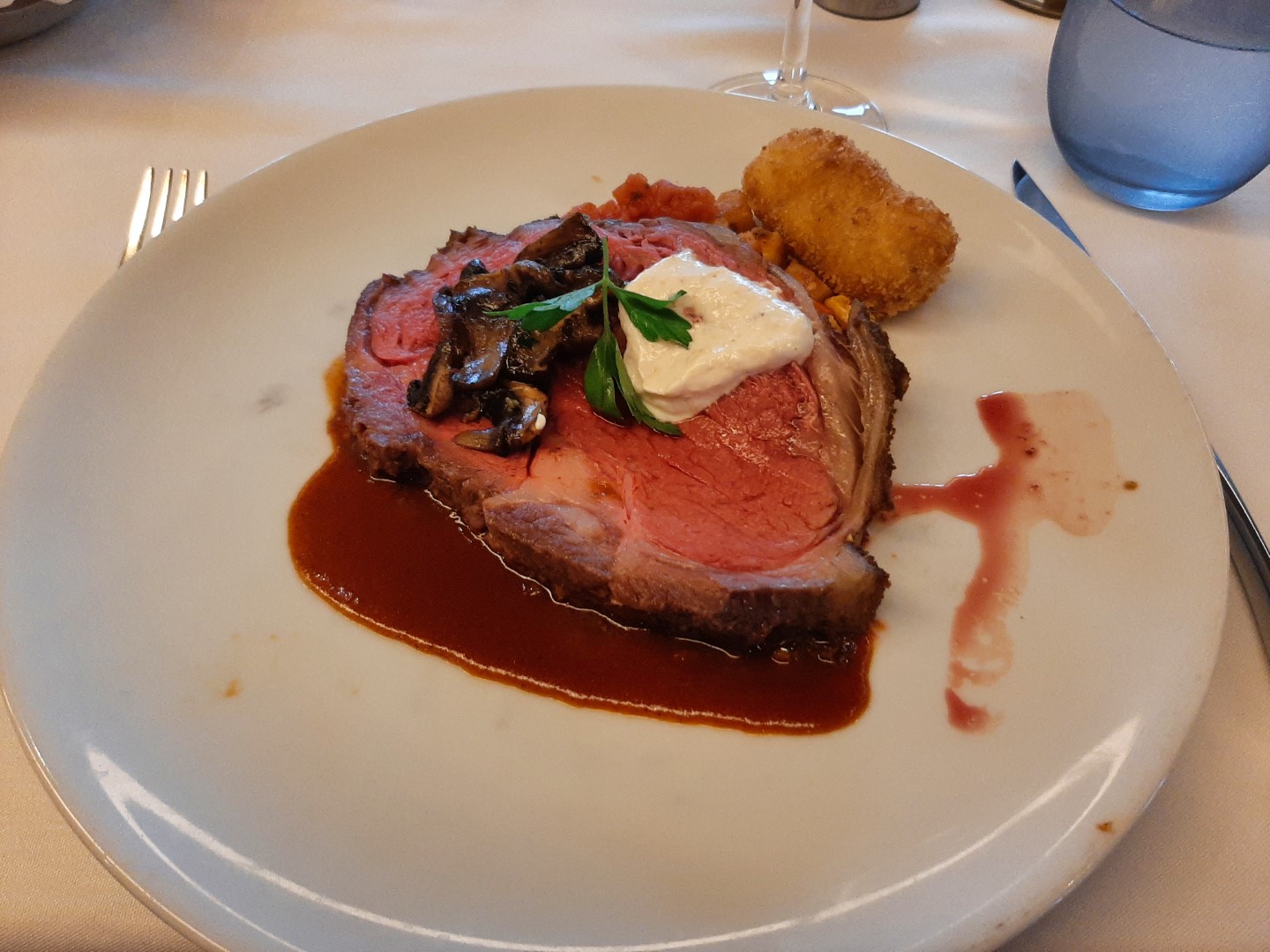We FINALLY made it to our twice delayed Alaskan Cruise!
Our first day was simply getting settled at our hotel in Vancouver.
Our second day we took a ferry to Victoria BC. Along the way we had a great view of Mt. Olympus on Washington’s Olympic Penninsula.
We toured the city of Victoria and viewed the British Columbia Parliament Building. Although we know little about Canadian politics, it was interesting to read the placards and signs of the various protestors out front.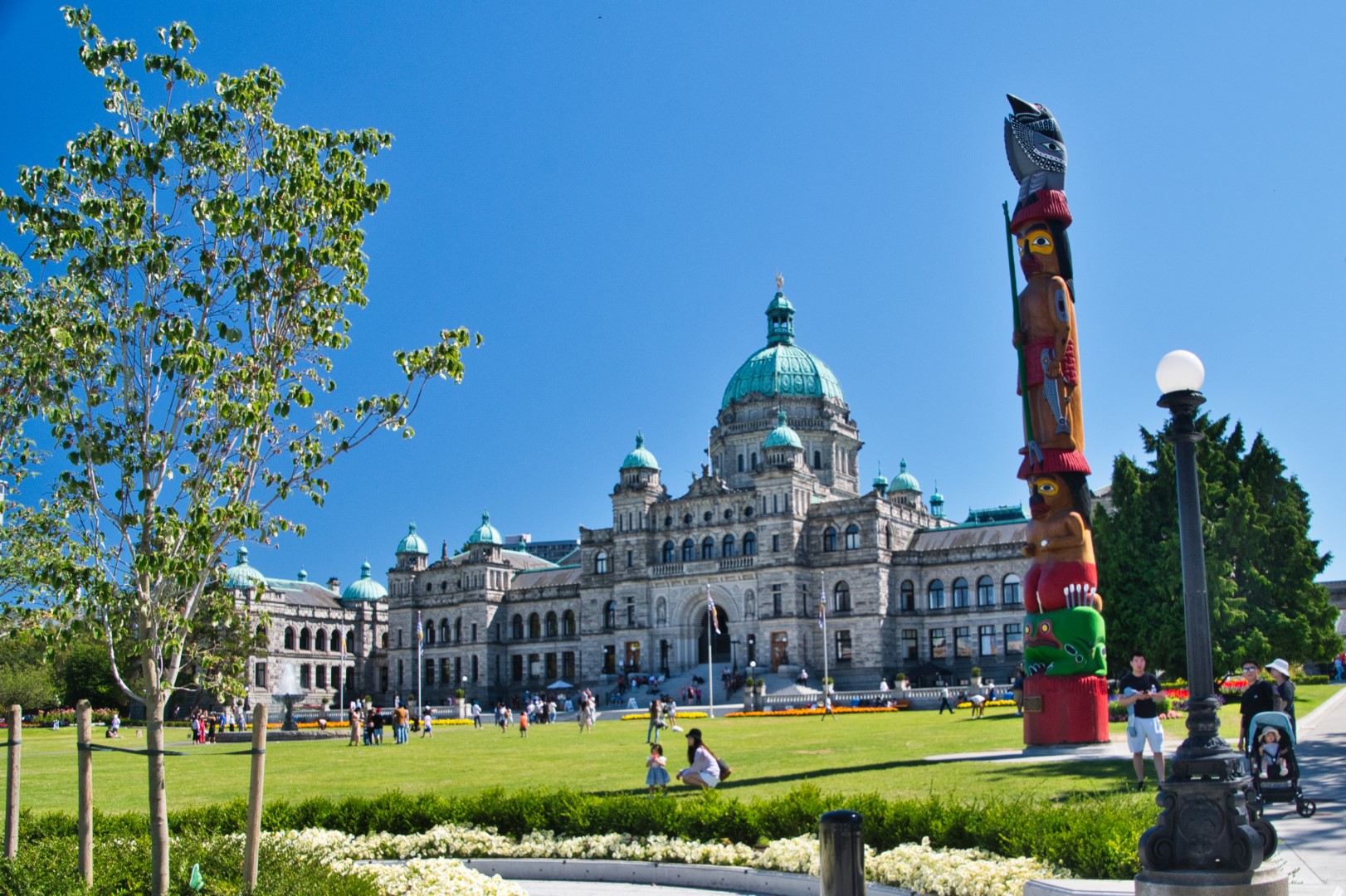
Then we went to Butchart Gardens! Most of you who know my Judith know that she loves gardening, so this had been on her ‘bucket list’ for a very long time. [While she often vetoes the number of bird pictures that I may include in one of our blog posts, I did NOT limit her flower picture selections in any way!]
Day three included a tour of the city of Vancouver, a visit to Stanley Park to see a collection of native Totem Poles, our final Covid-19 tests, and boarding of the ship.
Totem poles are not objects of worship or reverence, rather they are a story telling medium. 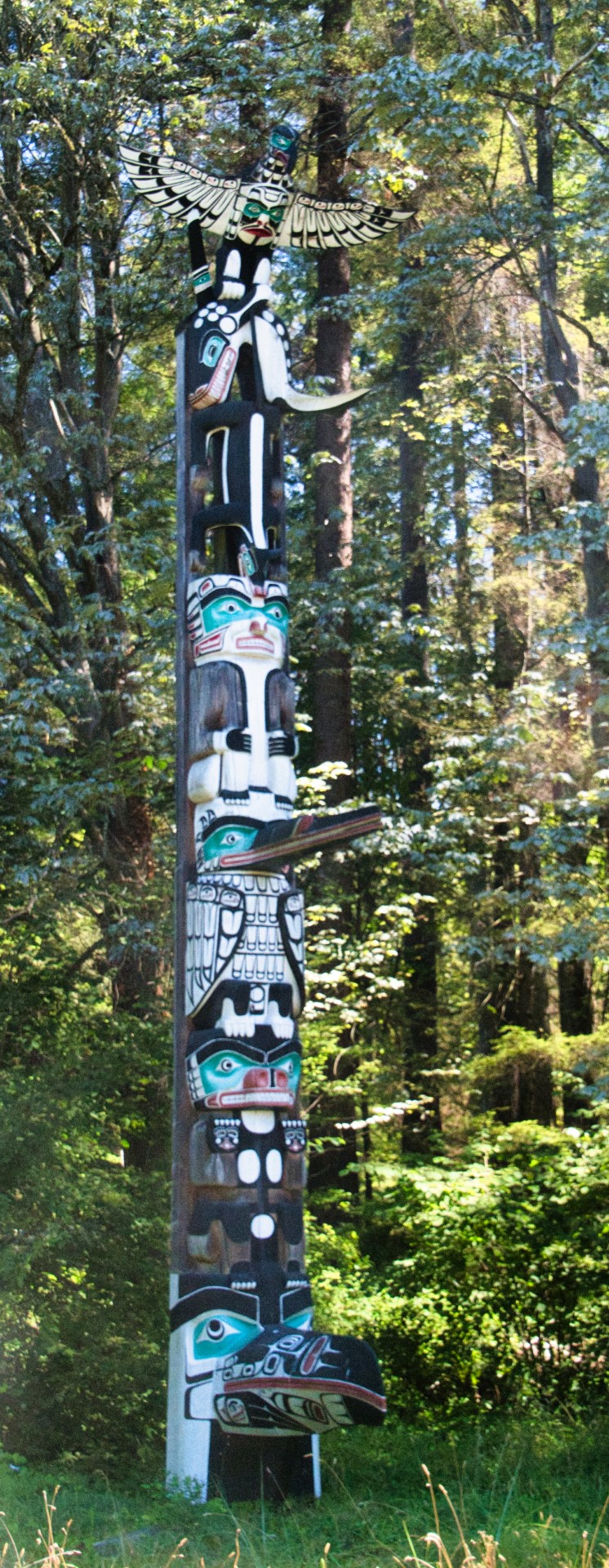
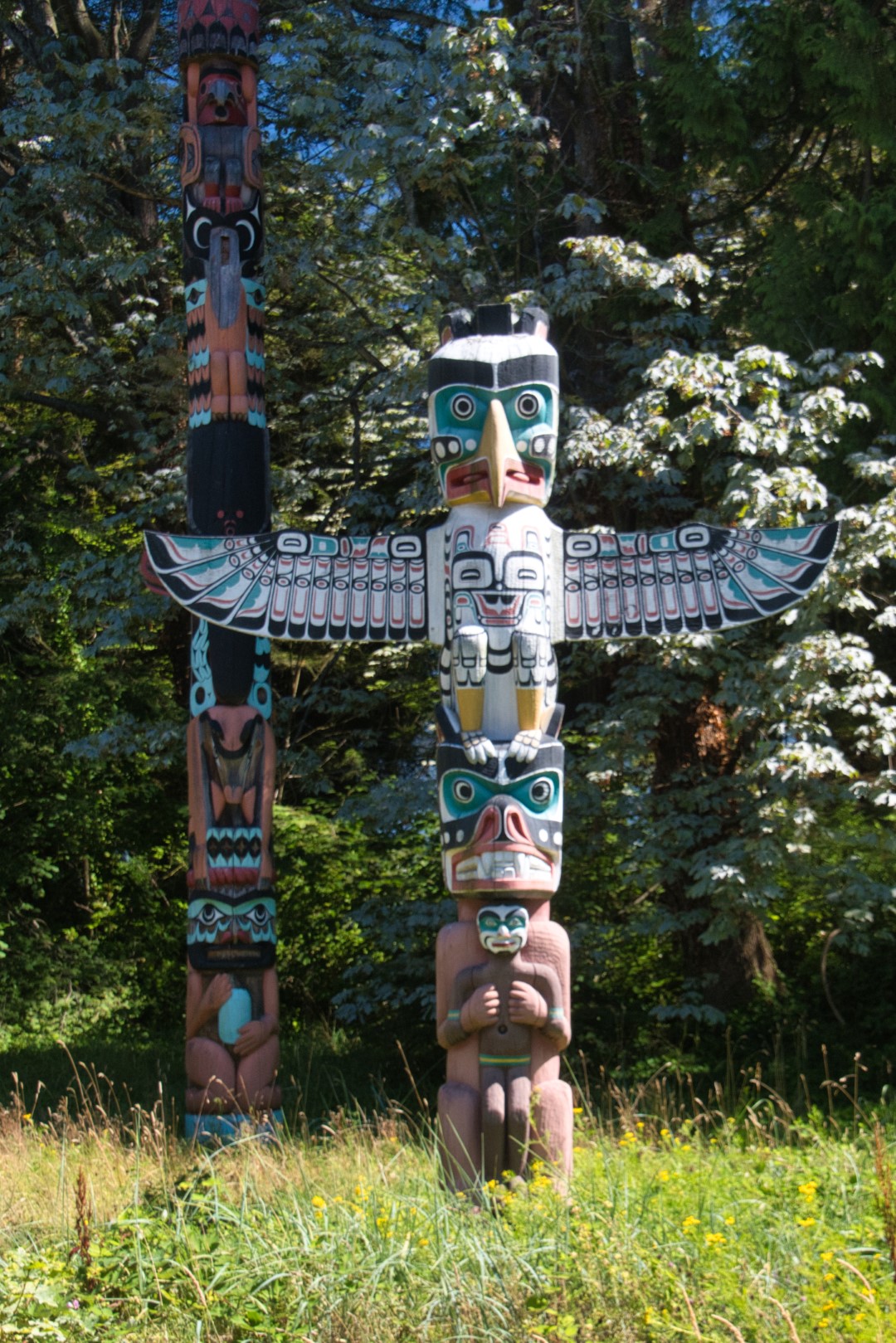
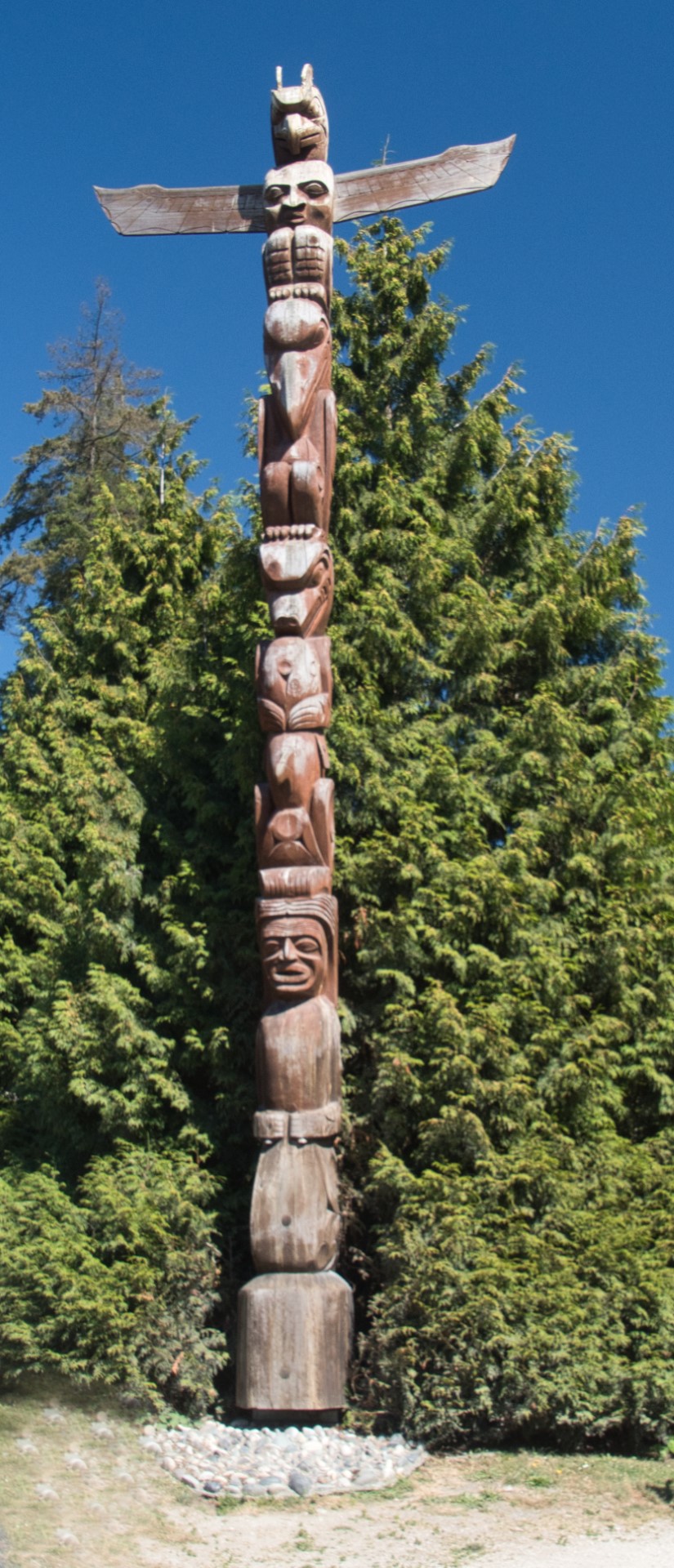
We got our first sight of our ship and on to our cabin.
The cabin was not huge, but actually much more spacious than we had anticipated, including a king bed, sitting area, and small desk.
Then the ship’s whistle blew and we were ON OUR WAY!
Day 4 was a rather quiet day cruising up along the Inside Passage. This gave us a chance to become acclimated to the ship and it’s TEN passenger decks! Our cabin steward made us laugh with his decorations. There was an elephant in our room.
Day 5 we had arrived in Ketchikan. The town is quite small but Potlach Park, with its many totem poles, was delightful. The tour guide for the totem poles was excellent! One pair of folks on our tour was 92 & 93 years old! I hope that we can be that spry and alert when we reach that age. Of course, there was one trouble-maker in our group!
The interior of the clan house also was carved! 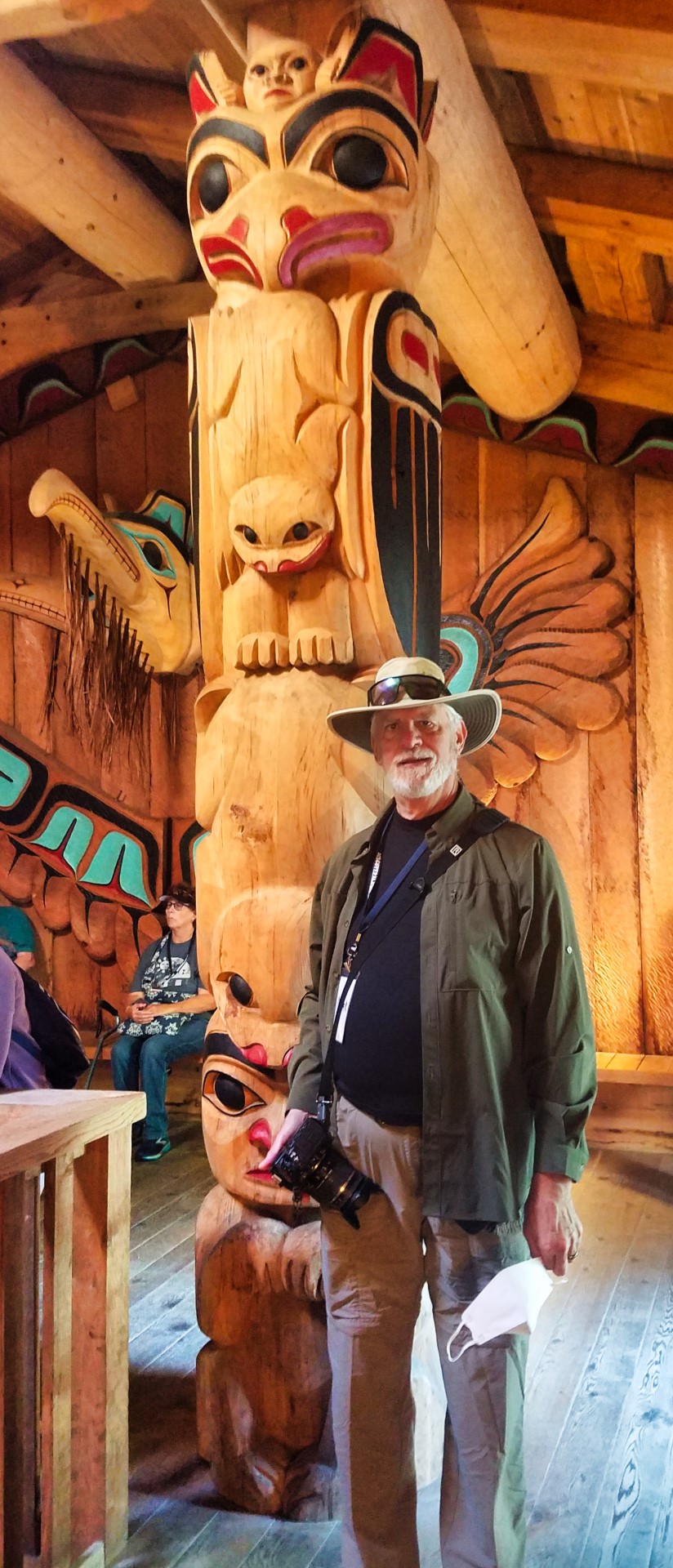



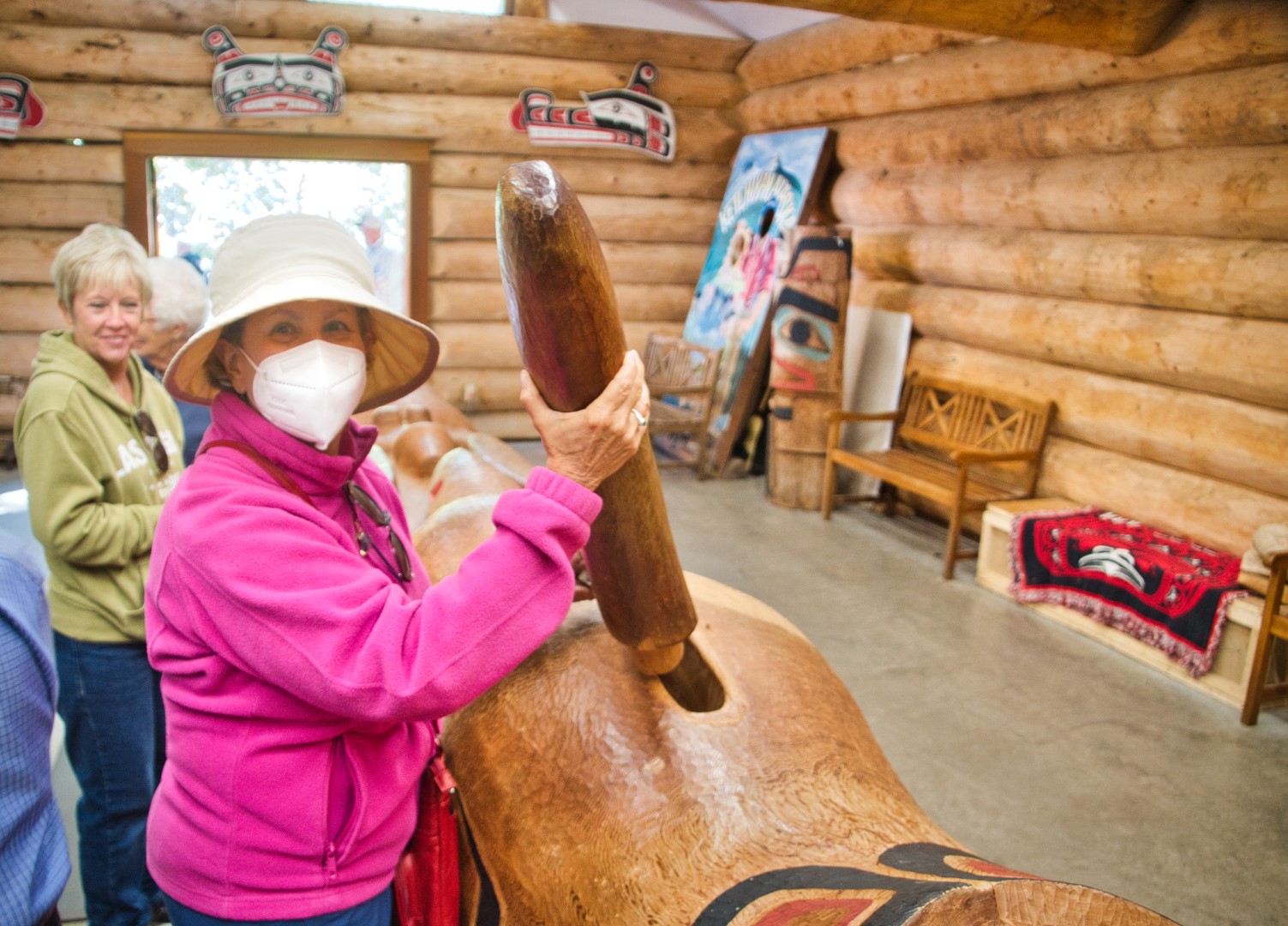
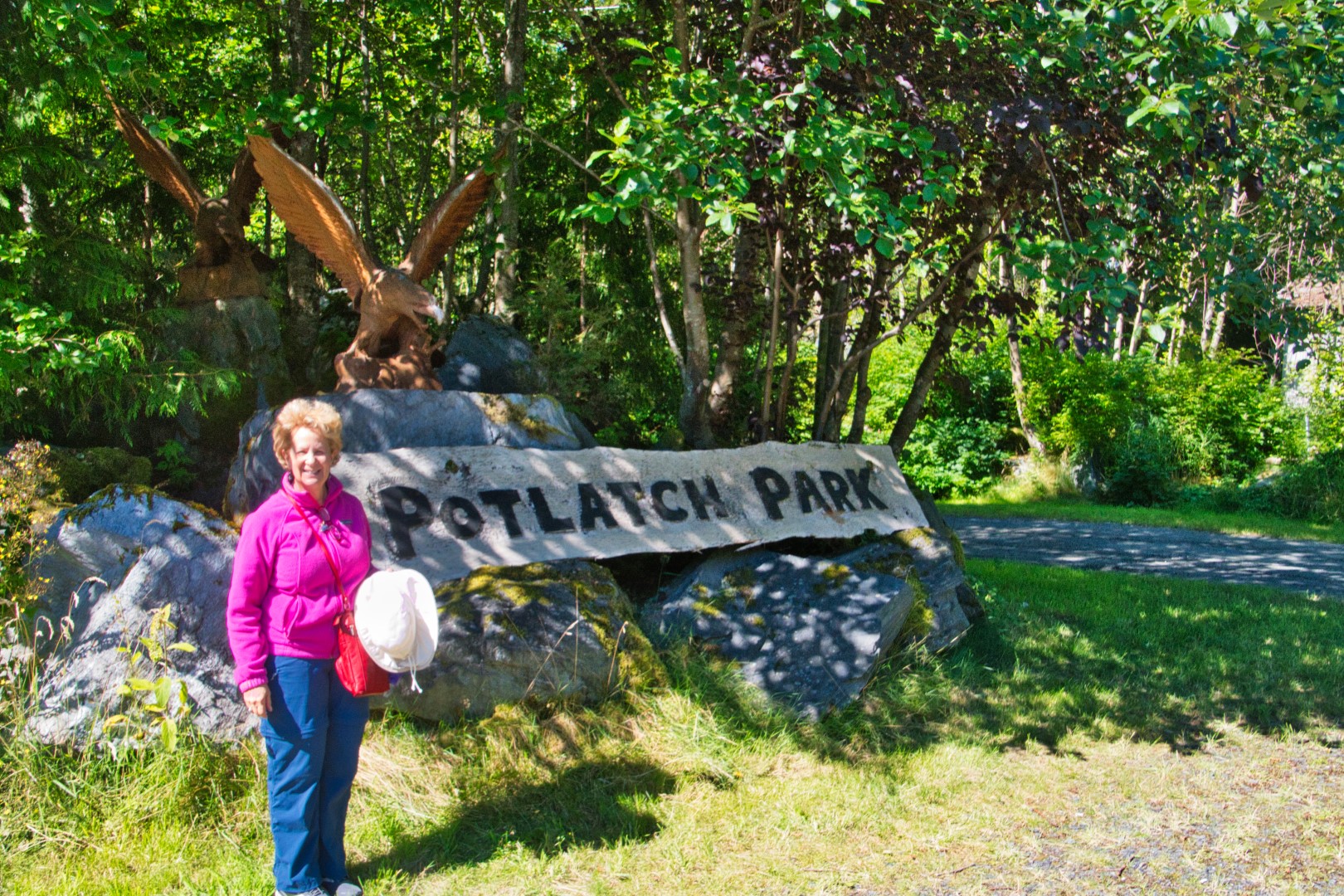
Day 6 was a stop in Alaska’s capital city, Juneau. I had not previously known that Juneau could not be reached by roadway from the continental United States. It can only be accessed by boat or plane.
Here we are as the ship cruises into Juneau. 
We took a hike to Nugget Falls and the Mendenhall Glacier. Spectacular! There were huge ice flows in the lake.
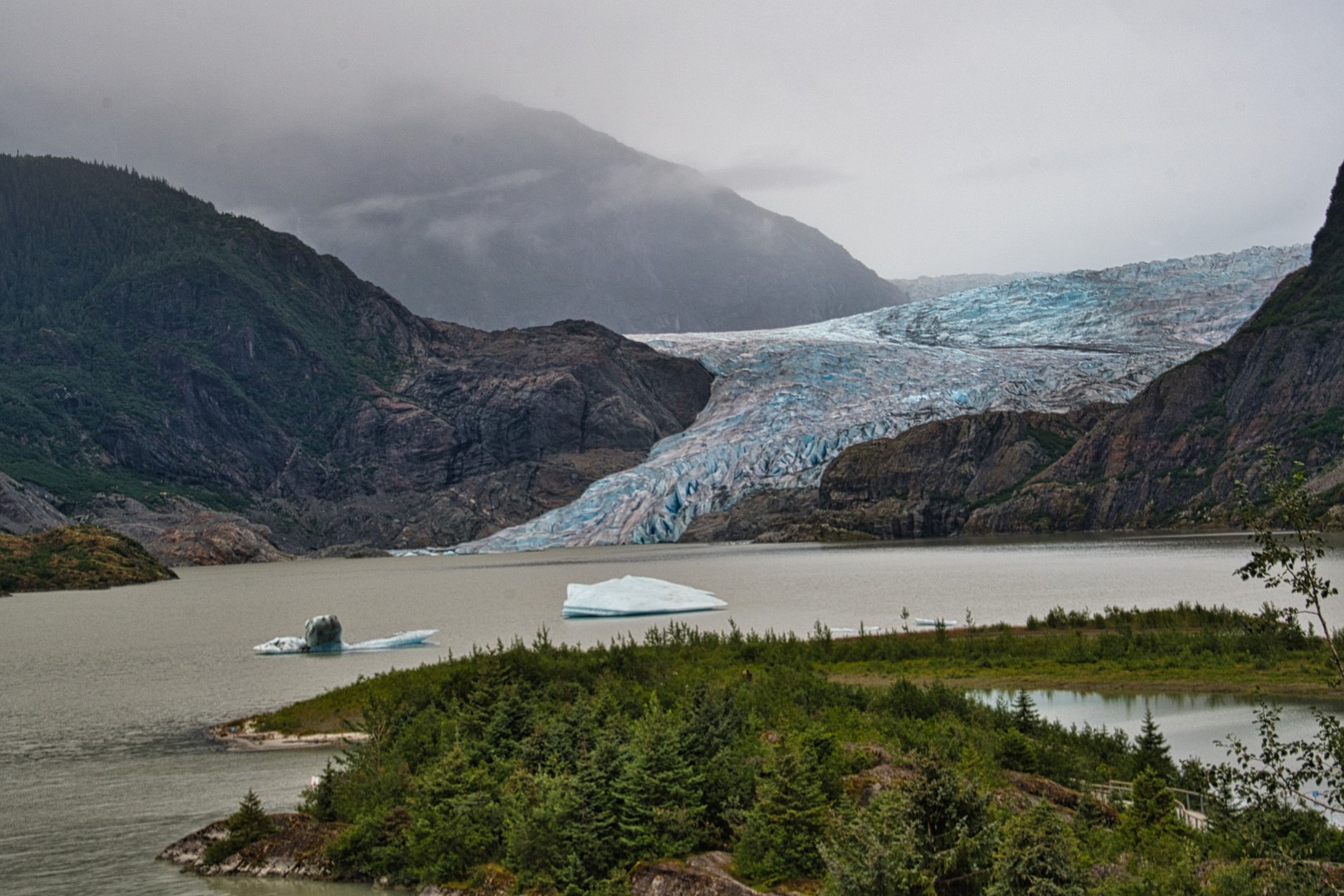


Then we toured the salmon hatchery. They raise and release over 1 million salmon fingerlings each year. Only about 10% survive to return and breed. Many fall prey to predator’s, such as this harbor seal enjoying a salmon snack.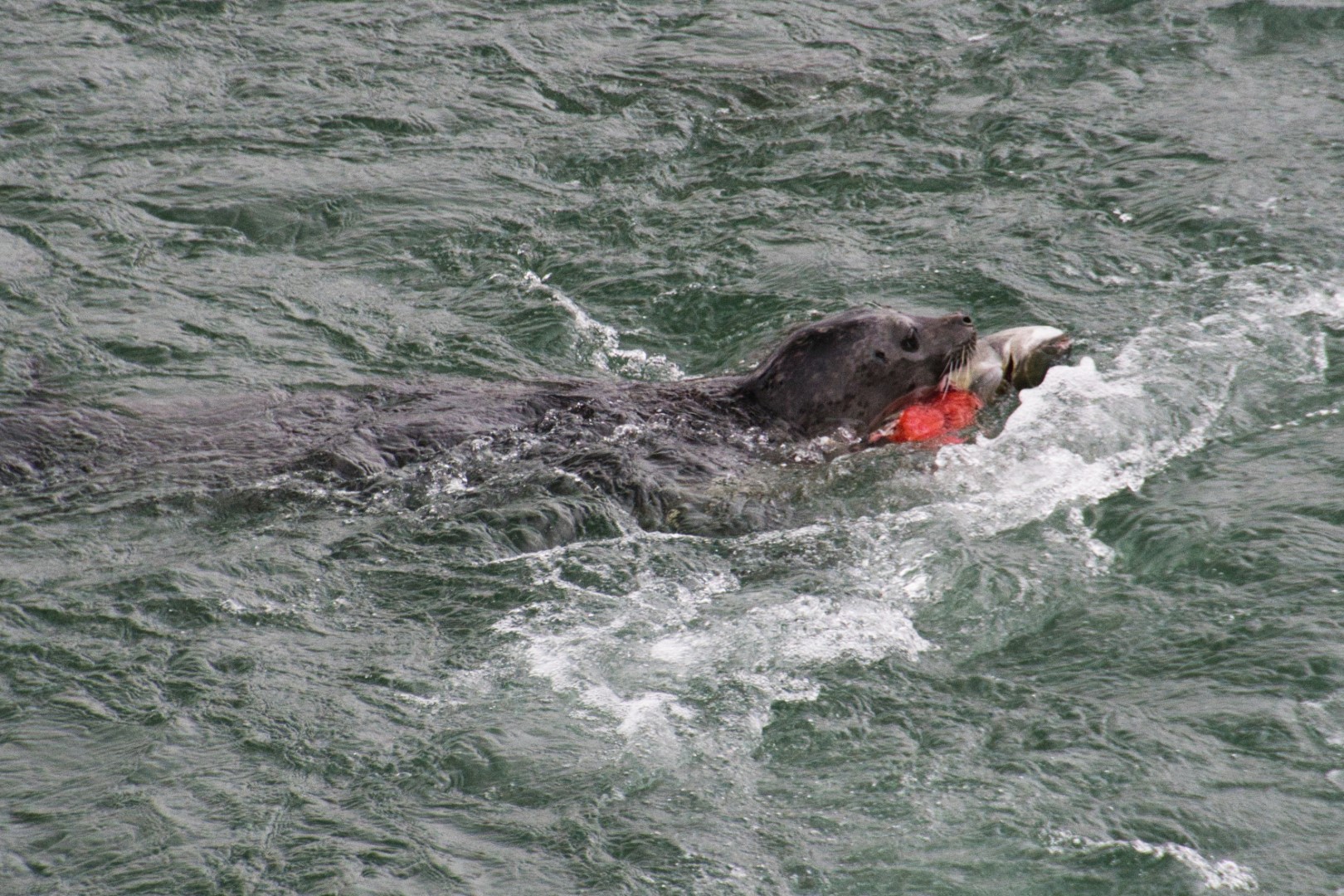
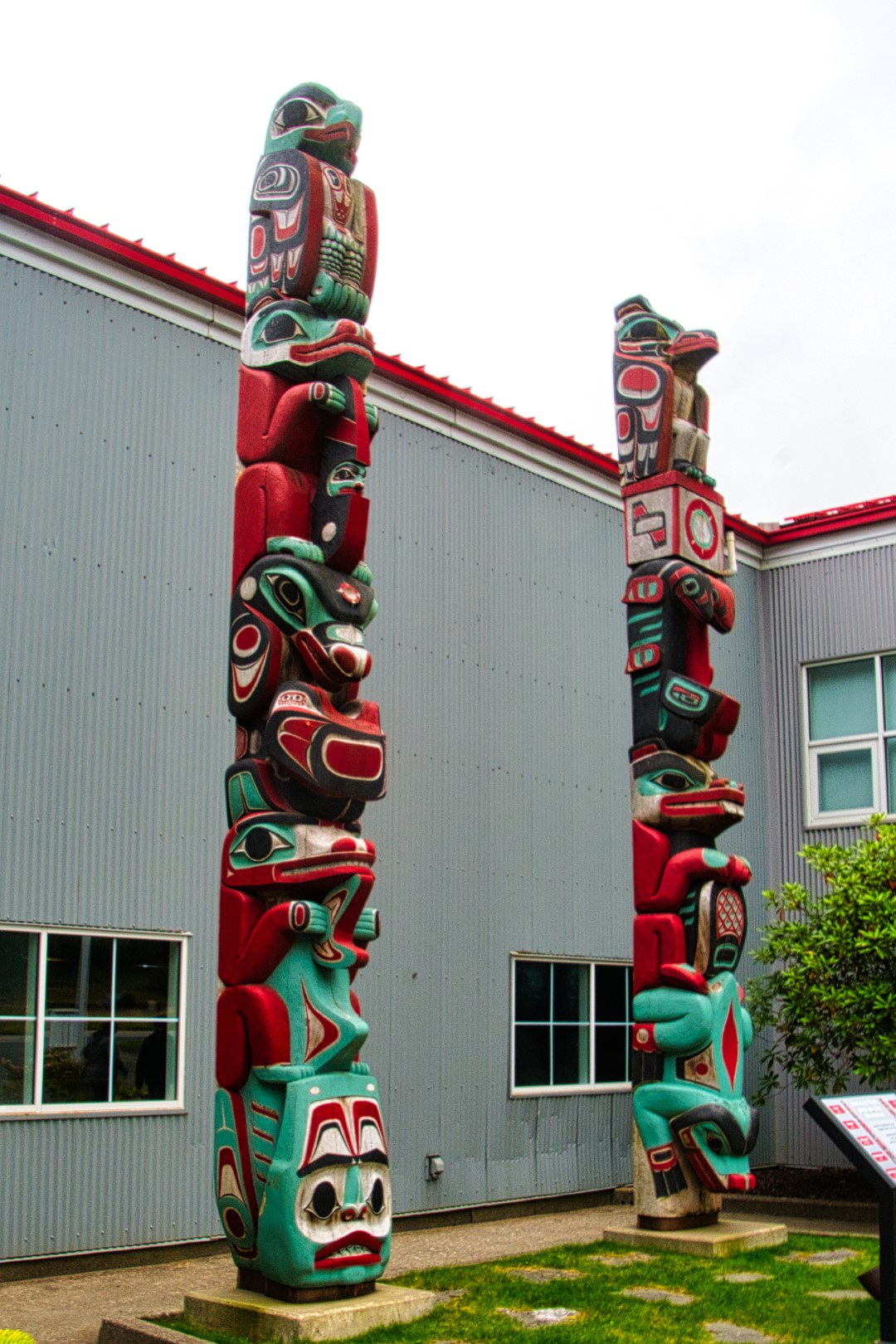
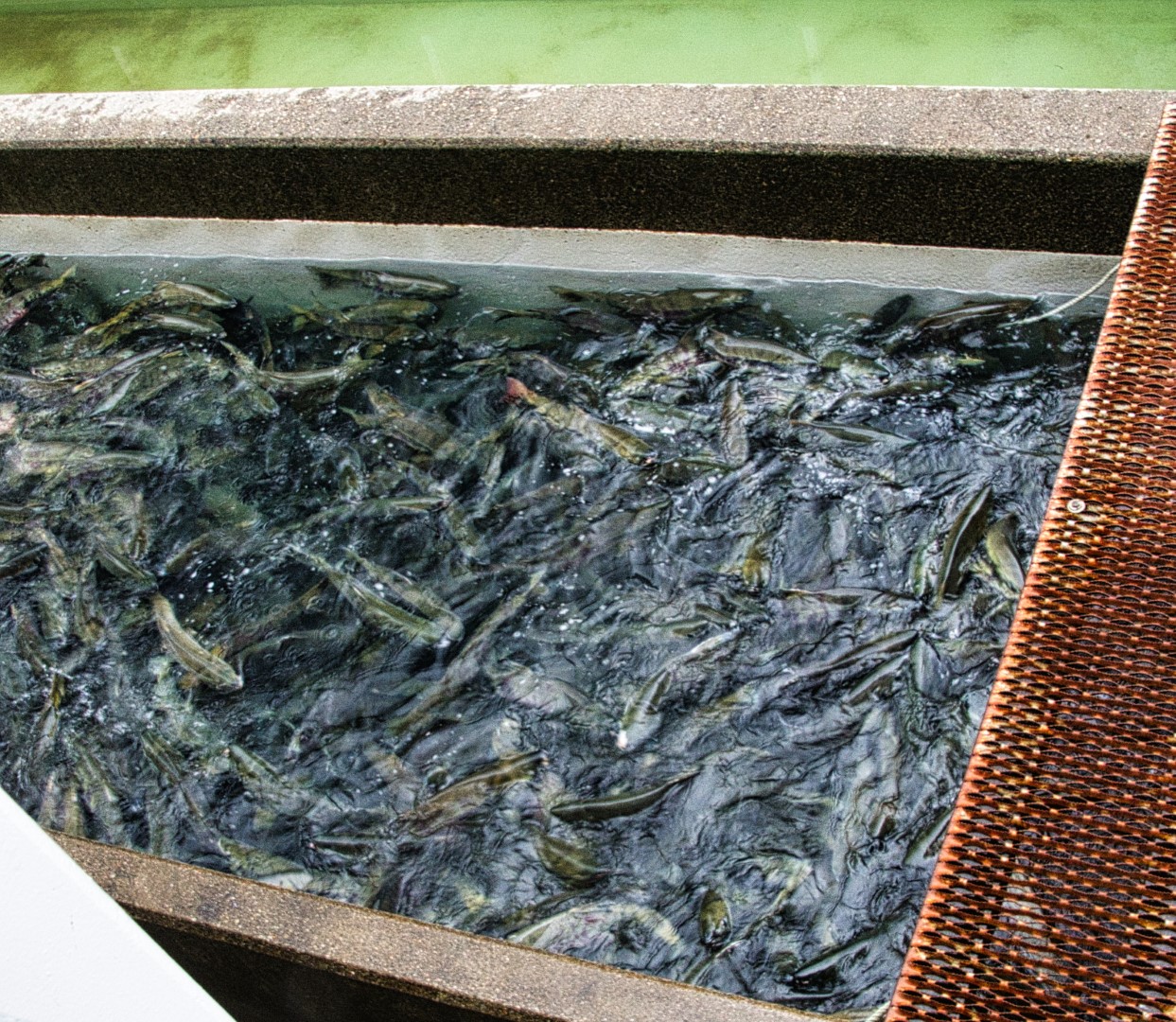
We also visited Glacier Gardens, a most interesting place, but not what we were expecting. They have taken dead trees and embedded them in the ground upside down, so their roots are up in the air and form a basket for planting. (In fact, one pair of eagles have selected one of these structures for their nest.)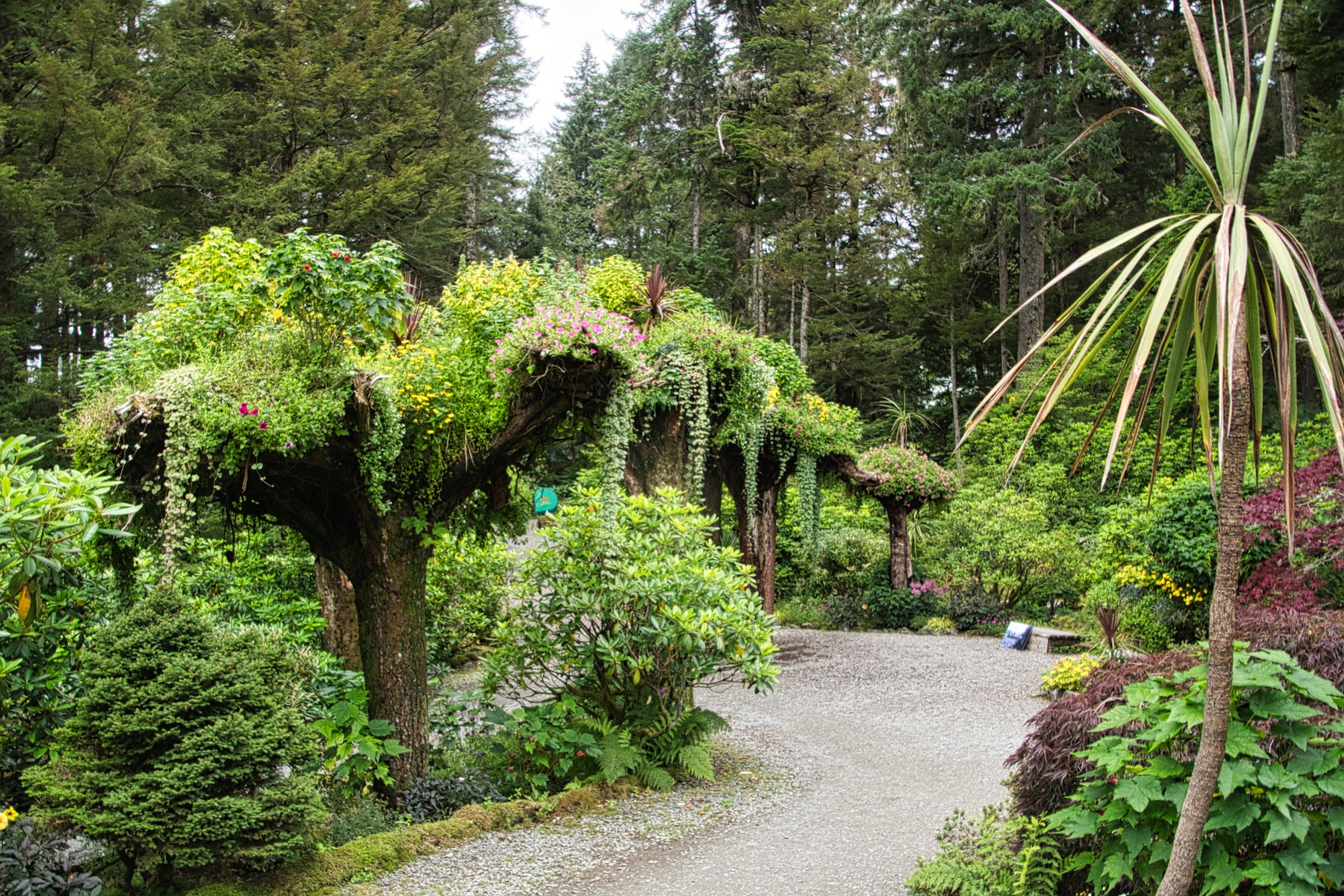
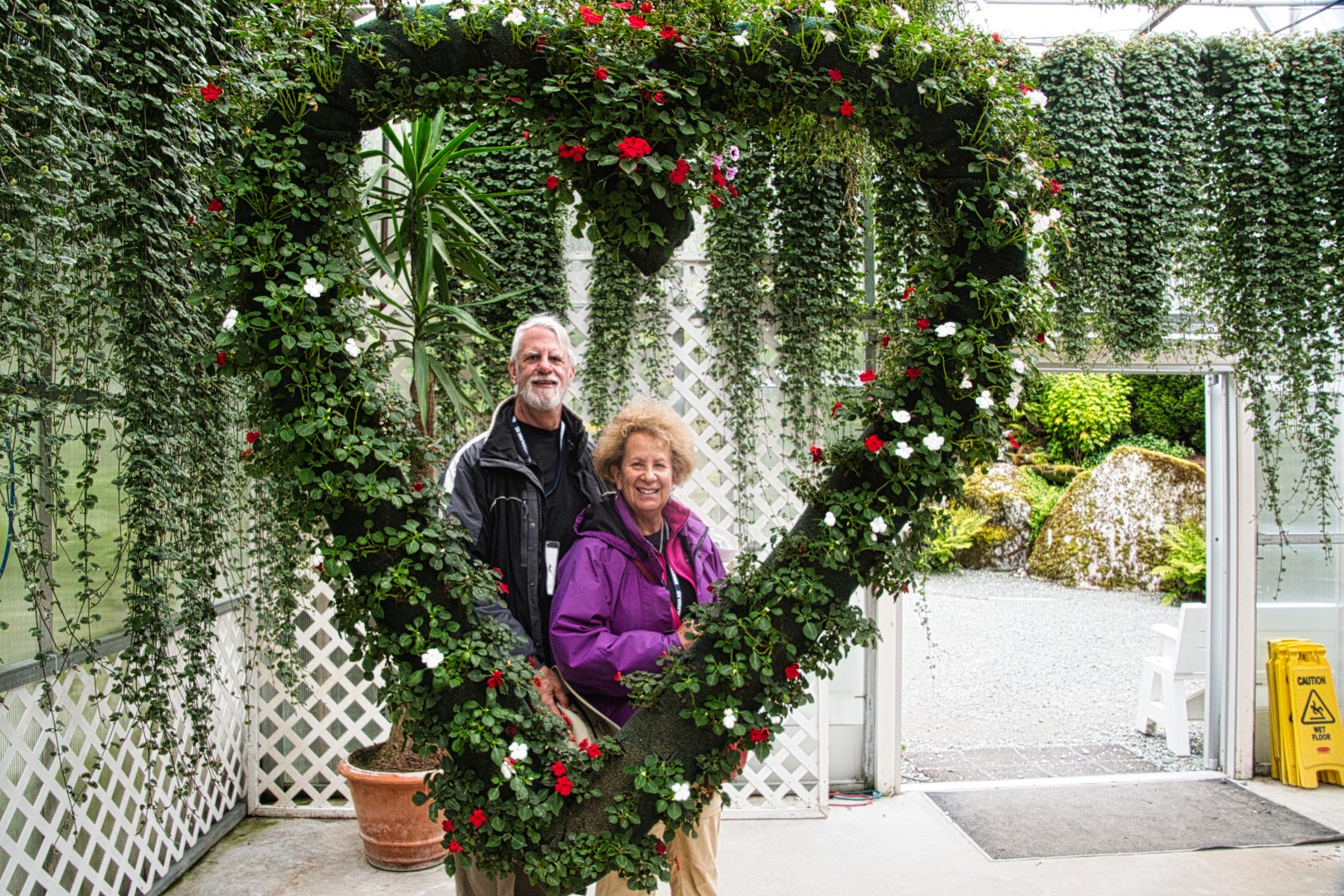
The view of Juneau, its airport and harbor were stunning from there, though.
There is a most interesting whale statue in a park along the way.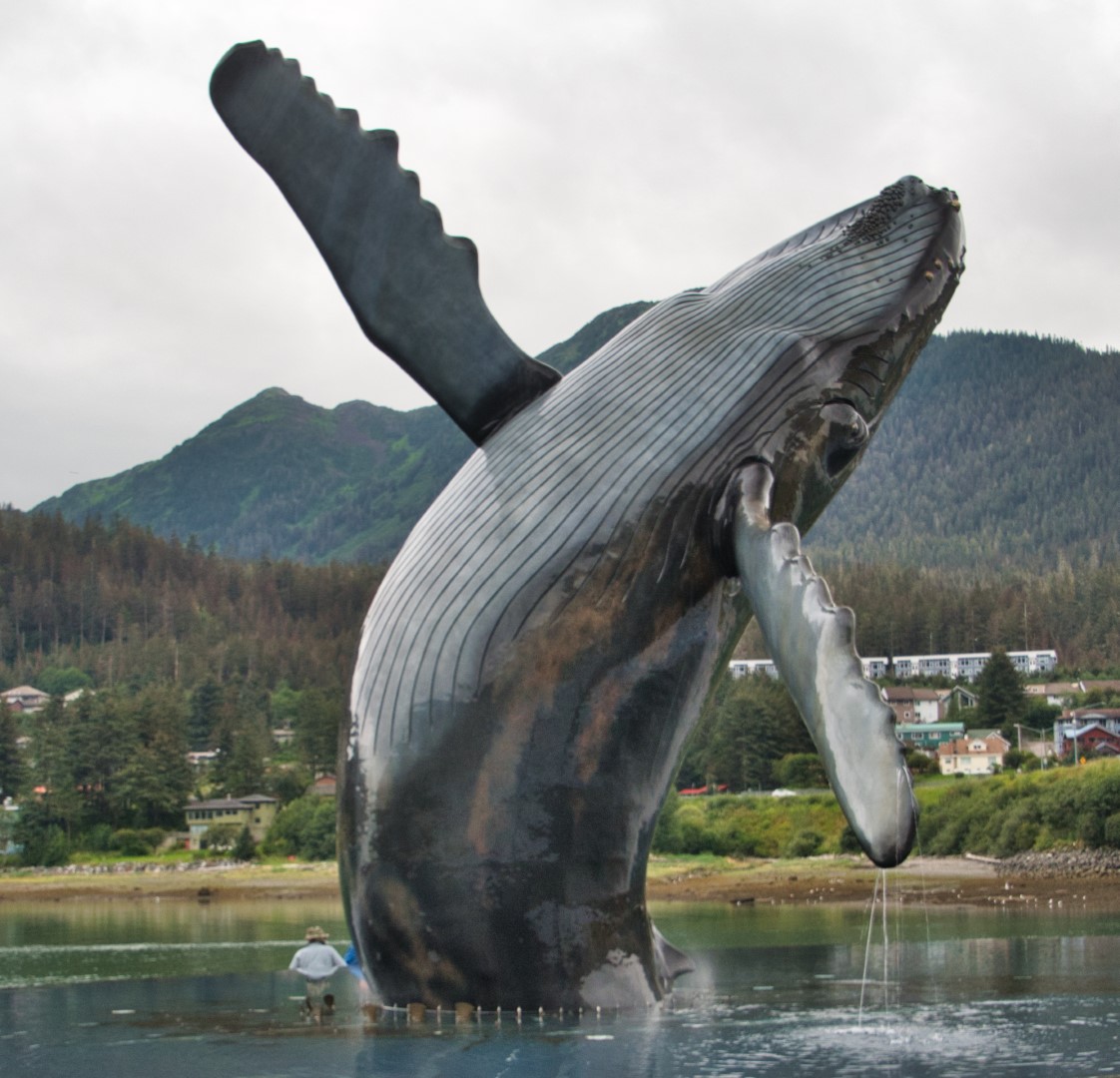
Most evenings we ate dinner in the main dining room, with white table cloths and waiters. Occasionally we chose to share a table with other travelers. One such evening we were sitting with a sufferer of Crohn’s disease. He could not tolerate any gluten in his food, and the chef met with him every day to plan and prepare special dinners for him!
Day 7 we visited Skagway, the jumping off point for people heading to the Klondike gold fields at the end of the 1800’s. At that time the town was a ‘wild west’ frontier with many opportunists and scoundrels, such as Soapy Smith, a con man. We visited the Gold Rush Cemetery where his grave, and the graves of many others from that era lie.
Our guide took on the persona of Soapy Smith as he introduced us the the Gold Rush Cemetery. During our tour he also told jokes and lead singing. He definitely earned his tip!
The Canadian authorities would not permit prospectors to enter into Canada unless they had a full year’s provisions, about 2,000 pounds of food and equipment. The trail up the Chilkoot Pass was steep and rocky and required moving their heavy load in segments up the trail, then returning for the next portion of their load. The path they took is still visible in many places nearly 125 years later! (The green meandering path below.)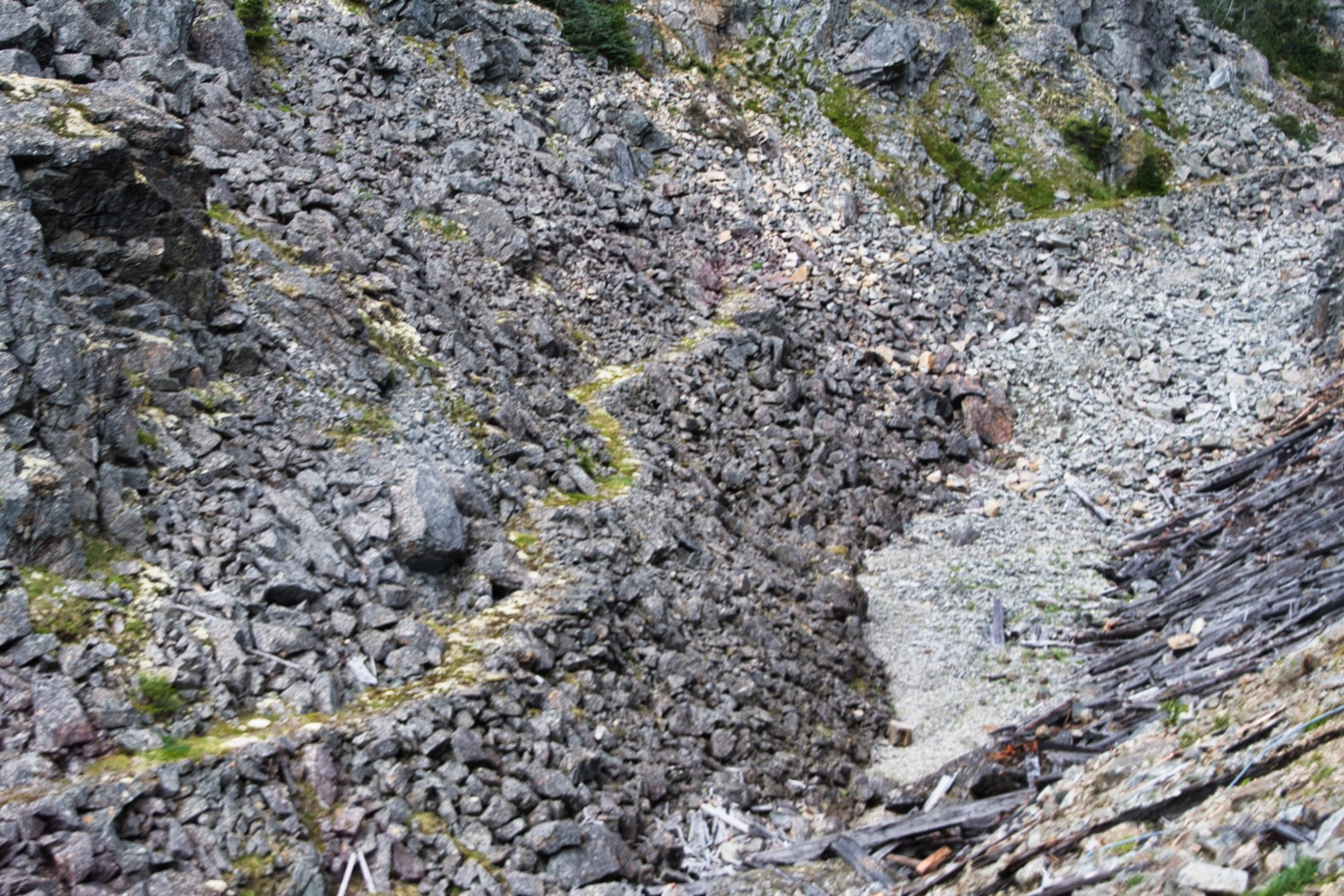
It is no wonder many of these prospectors became discouraged! And, after the hardship of the trail with many dying along the way, the vast majority of prospectors arrived after all of the good claims had been taken, so they had made this arduous trip for naught.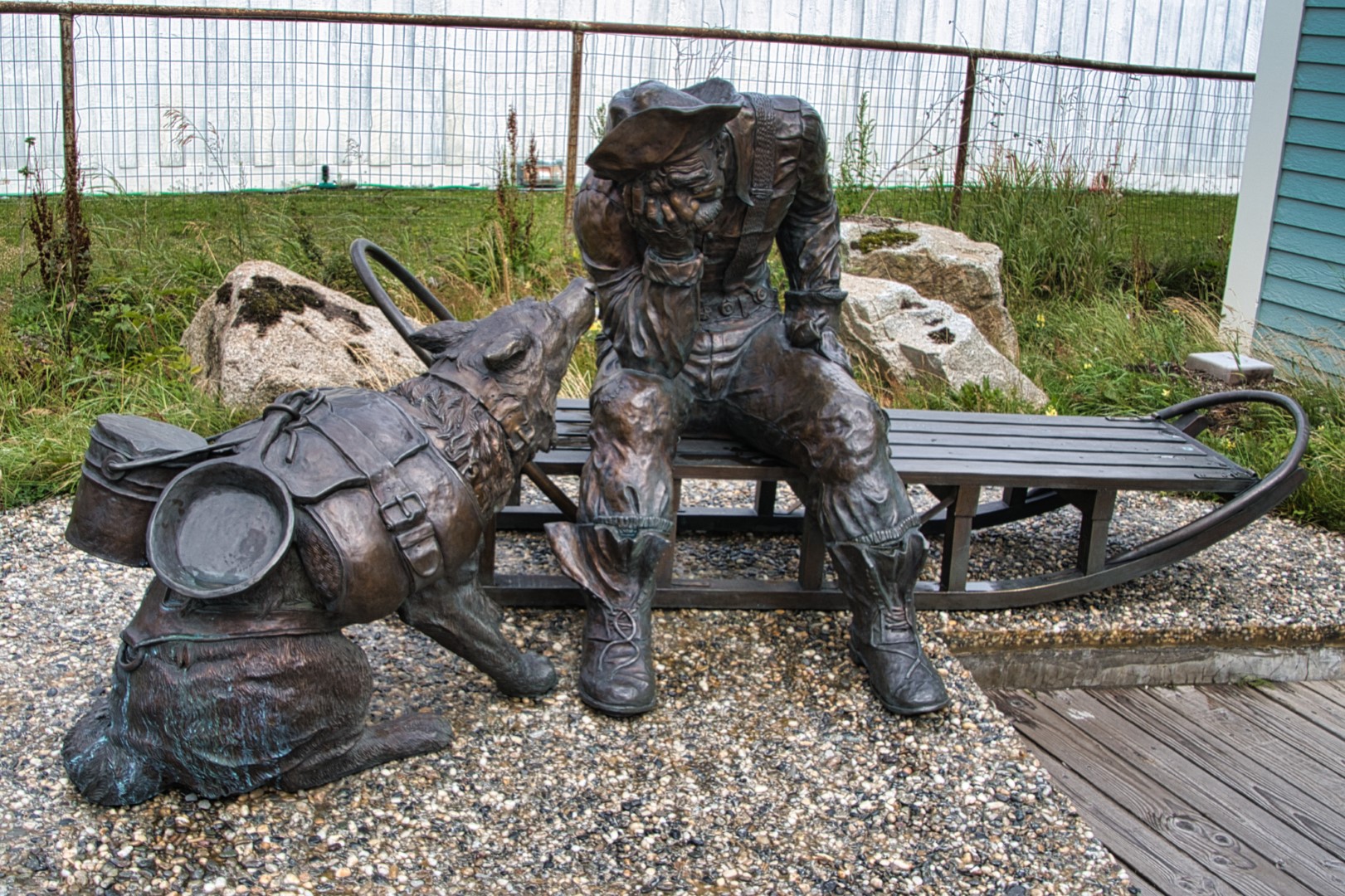
A railroad was finally built, but all of the good claims were already taken by that time. For Alaskan winters, you need a good snow blower! How about this one?
We rode the White Pass & Yukon Route narrow gauge railroad up to the top of the pass. Here we are bending back around on a curve, going over a trestle bridge, and preparing to enter a tunnel. 
But the scenery along the ride up the mountains was breath taking.


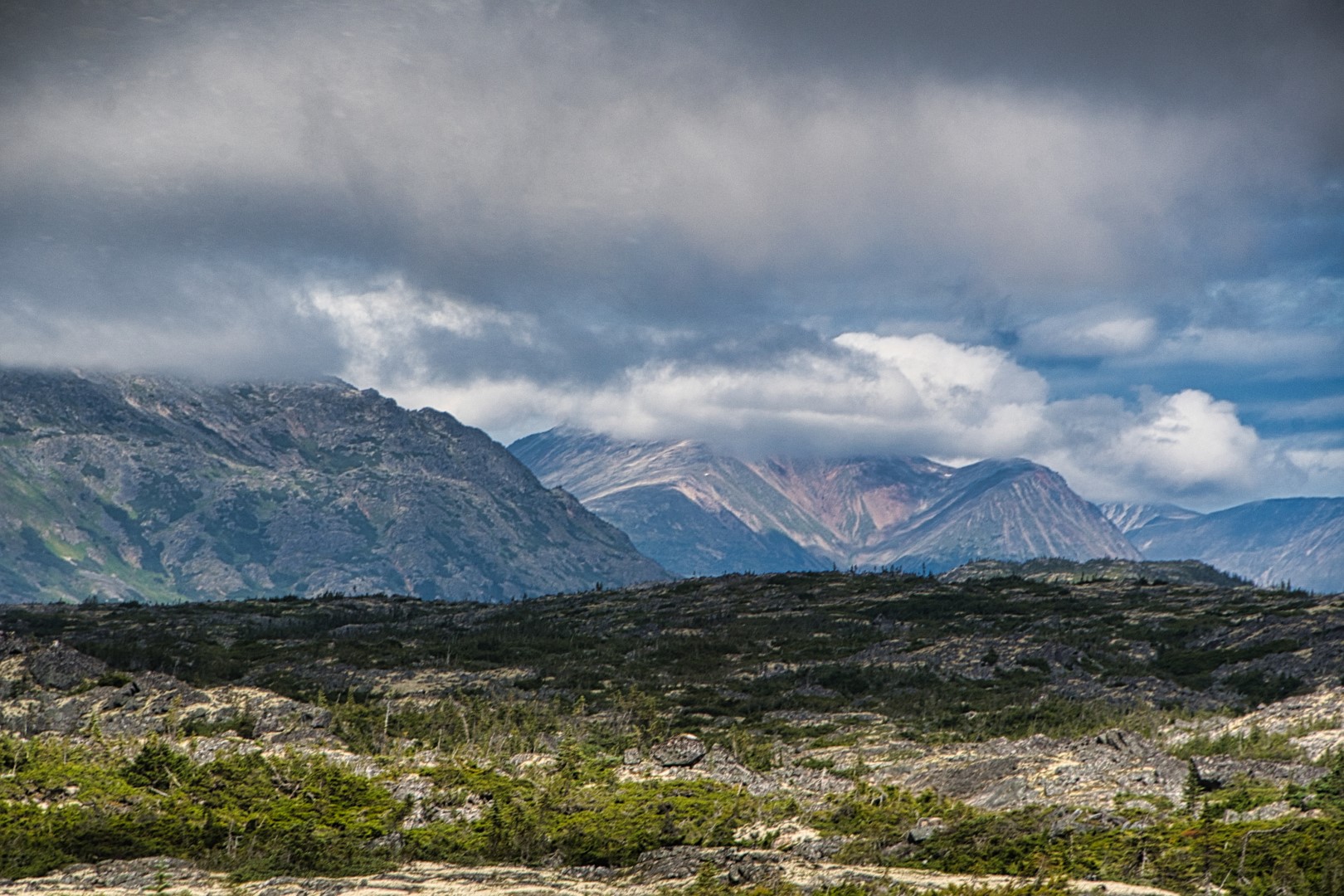


That evening we enjoyed dinner in one of the fine dining restaurants aboard ship – the Canaletto Restaurant.
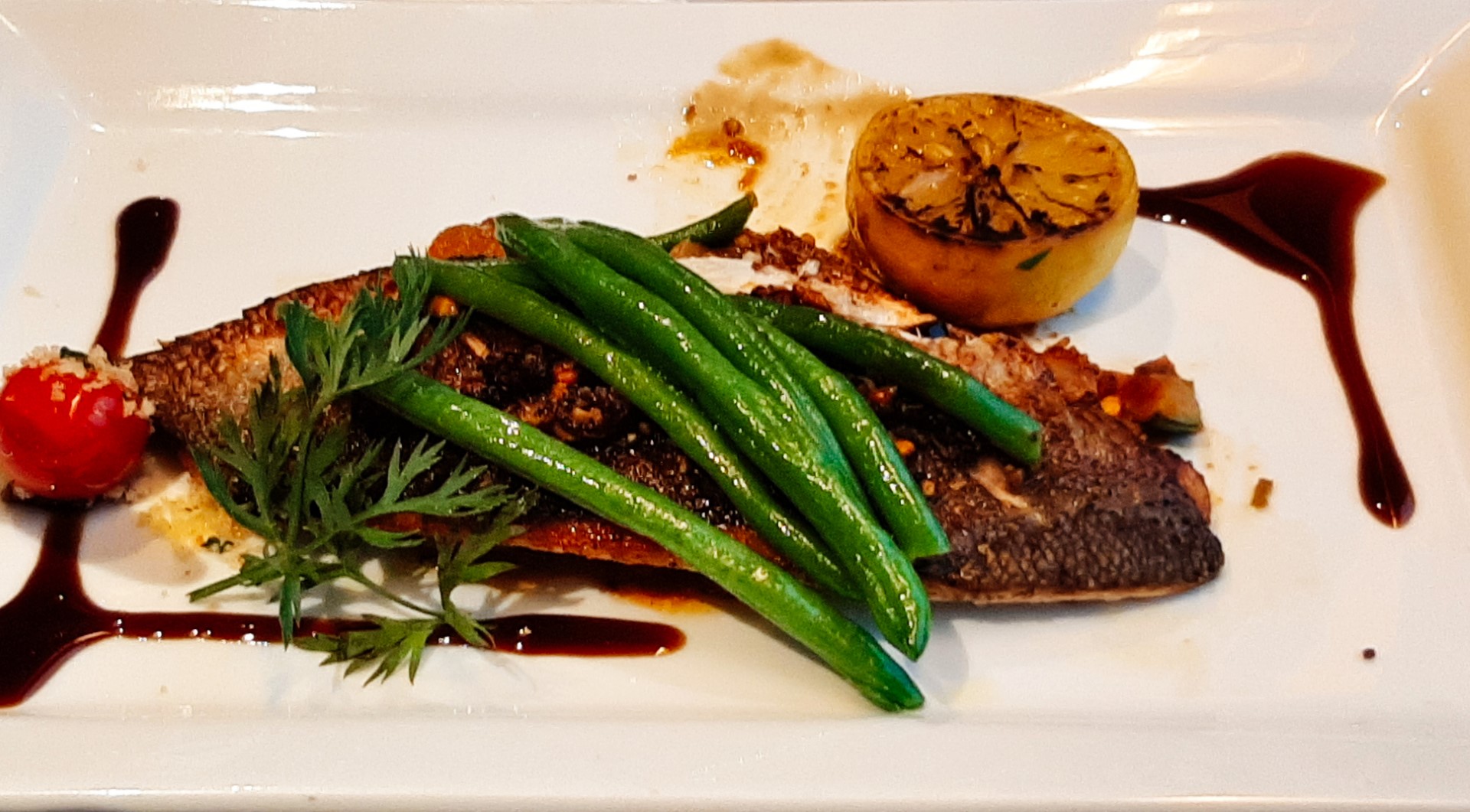
Judith really enjoyed her tiramisu!
While we ate dinner we kept seeing these little yellow life boats coming and going. We were told that a land slide had damaged the pier where a Royal Carribean ship was docked, so they were using their life boats to load her passengers. It was not safe for passengers to walk down the pier to reach their gang plank!
While you are aboard ship, it is easy to lose track of time, so the ship staff helps!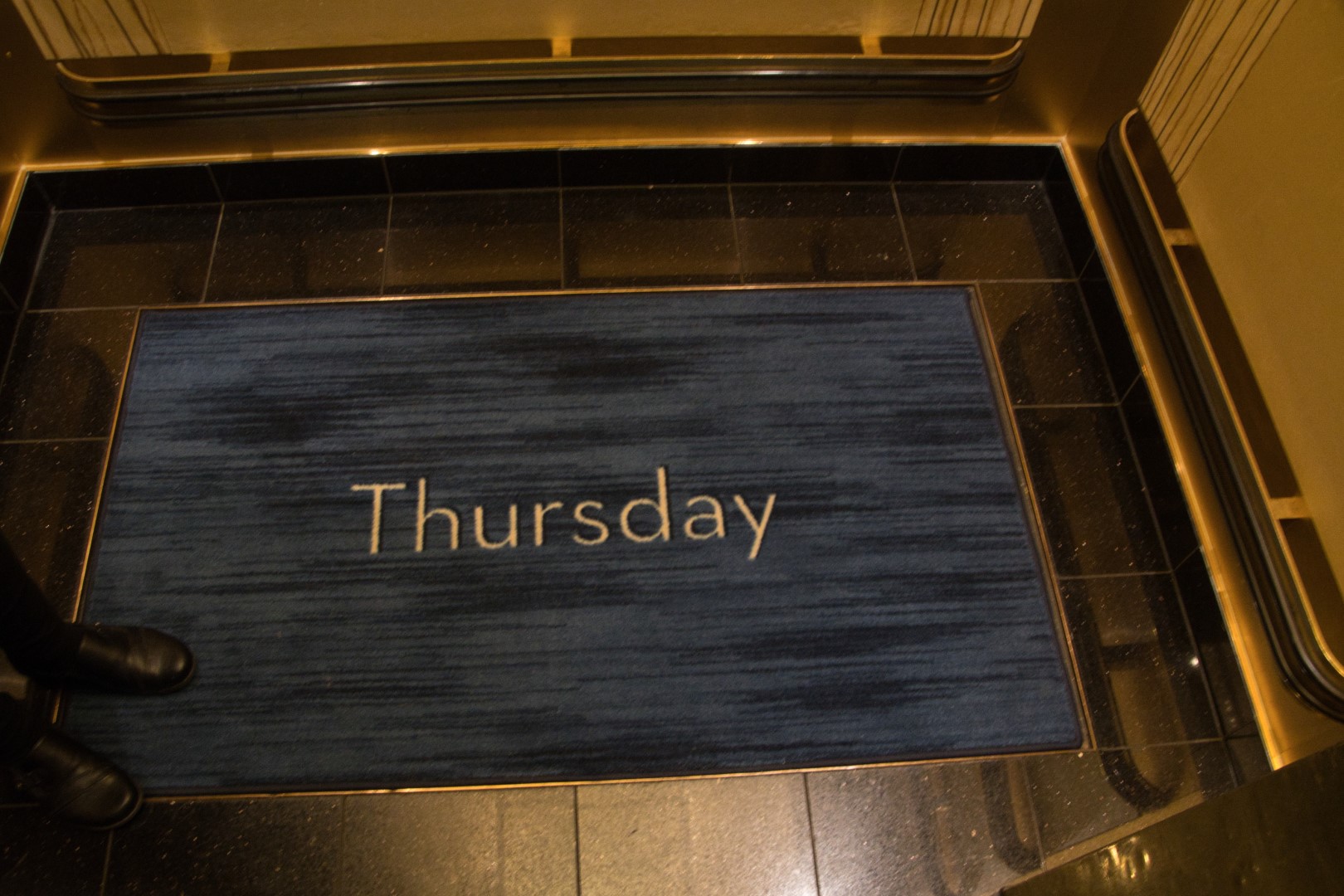
Judith/Judy here: The ship itself was beautiful, and we enjoyed the food (ridiculous amounts) and the entertainment. Breakfast and lunch on the Lido Deck, with about 6 different stations of food, including dessert or sweets at every meal, dinner in the dining room or in 2 specialty restaurants. I had fish almost every night! Entertainment included an amazing dance troupe that performed twice, dueling piano players who sang and entertained, chamber music, comedians, and several good lectures. We went to the one about whales, one about the ship itself hosted by the ship’s captain, who was charming, and surprisingly, a talk about the Holland America Cruise Line, which is 150 years old. The line actively pursued immigrants coming to the US, and set up boarding houses to house people in Rotterdam before getting on the ship. Even steerage passengers were fed 3 meals a day and medical care was available on board. If the immigrants were turned away at Ellis Island, the ship had to bring them back, so Holland America made sure everyone was healthy when they disembarked. I asked Mark if my ancestors came over on a Holland America ship (he’s the genealogist) and he seemed to remember that they had. When we got home, he pulled up the manifest and yes, my grandfather, his parents and 5 siblings came over on the Rijndam! Holland America’s ships also transported soldiers over to Europe during the war, 8000 on one ship!
The crew represented 40 different countries, and we often enjoyed talking to our waiters/waitresses about their experiences. When COVID hit, Holland America transported their employees to their home countries, rather than leaving them stranded in some random port.
Day 8 we entered Glacier Bay, a beautiful adventure. There are over 1,000 glaciers in Glacier Bay National Park & Preserve, although we saw only a tiny fraction of those it was still spectacular! The day started off overcast, but it became clearer and more beautiful as the day progressed.
It was brisk while on deck, but not frigid.
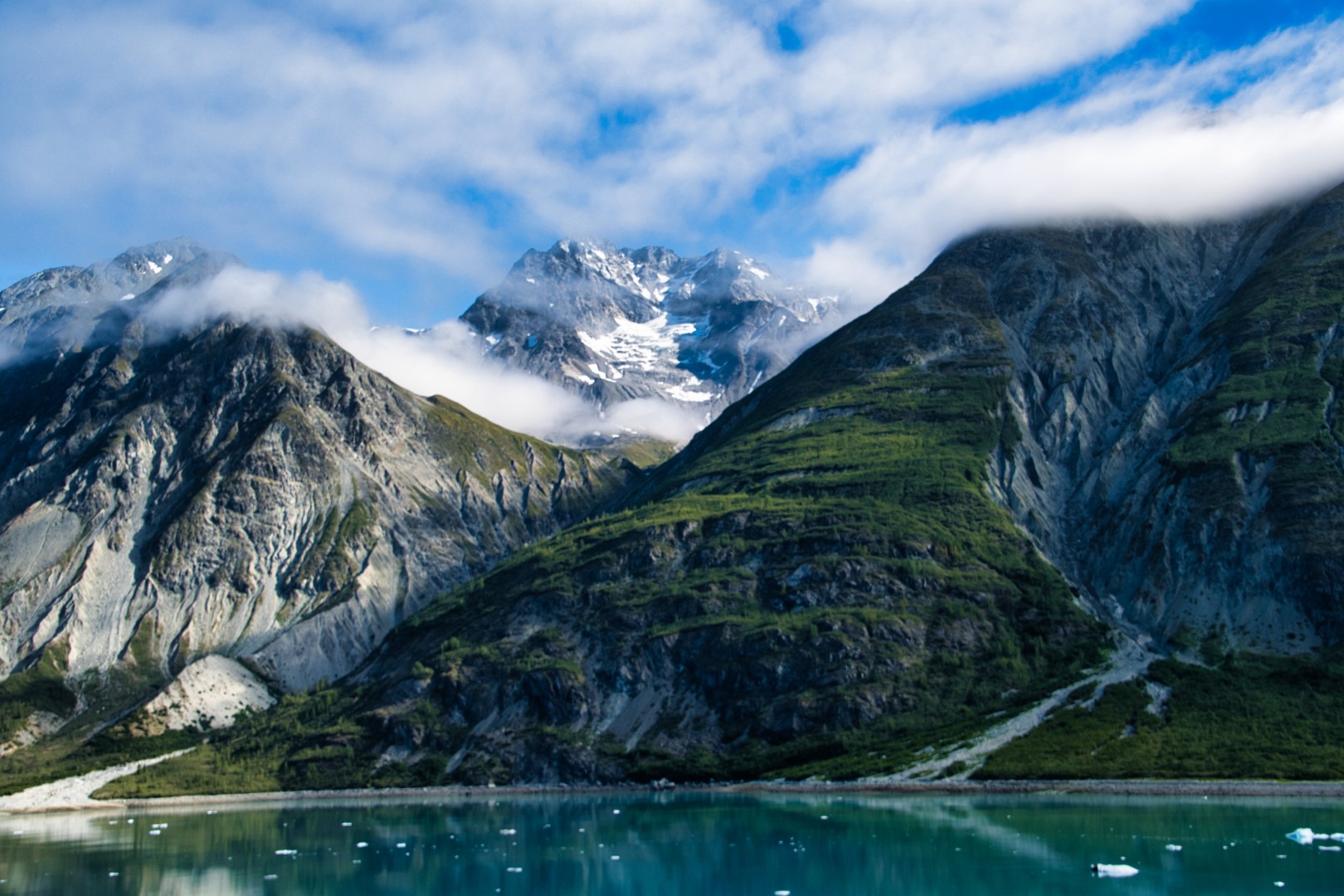
The Margerie Glacier has a face that is about 200 feet high! We saw three different time that great chunks of ice separated, or calved, from the face of the glacier. Unfortunately, no pictures.
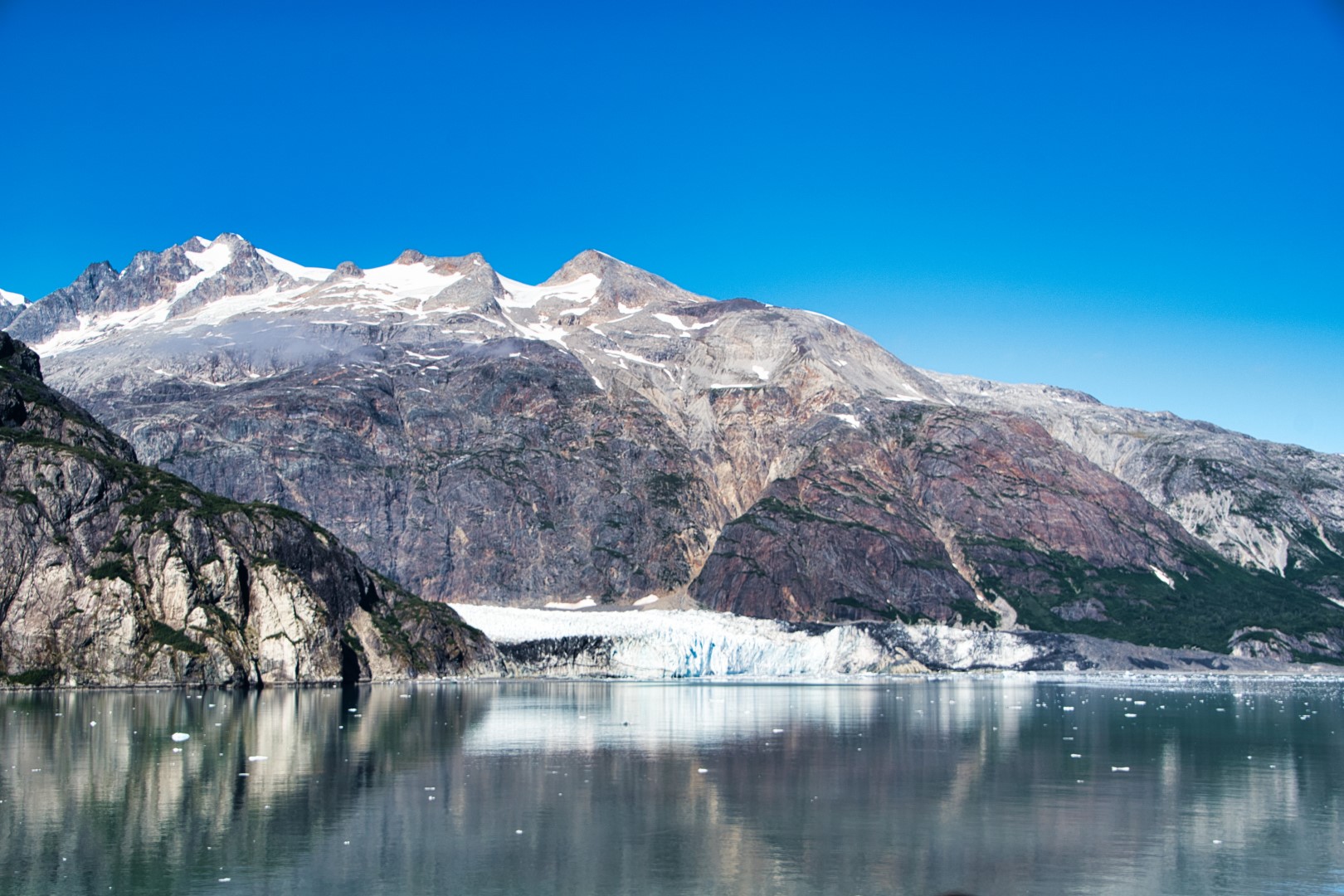
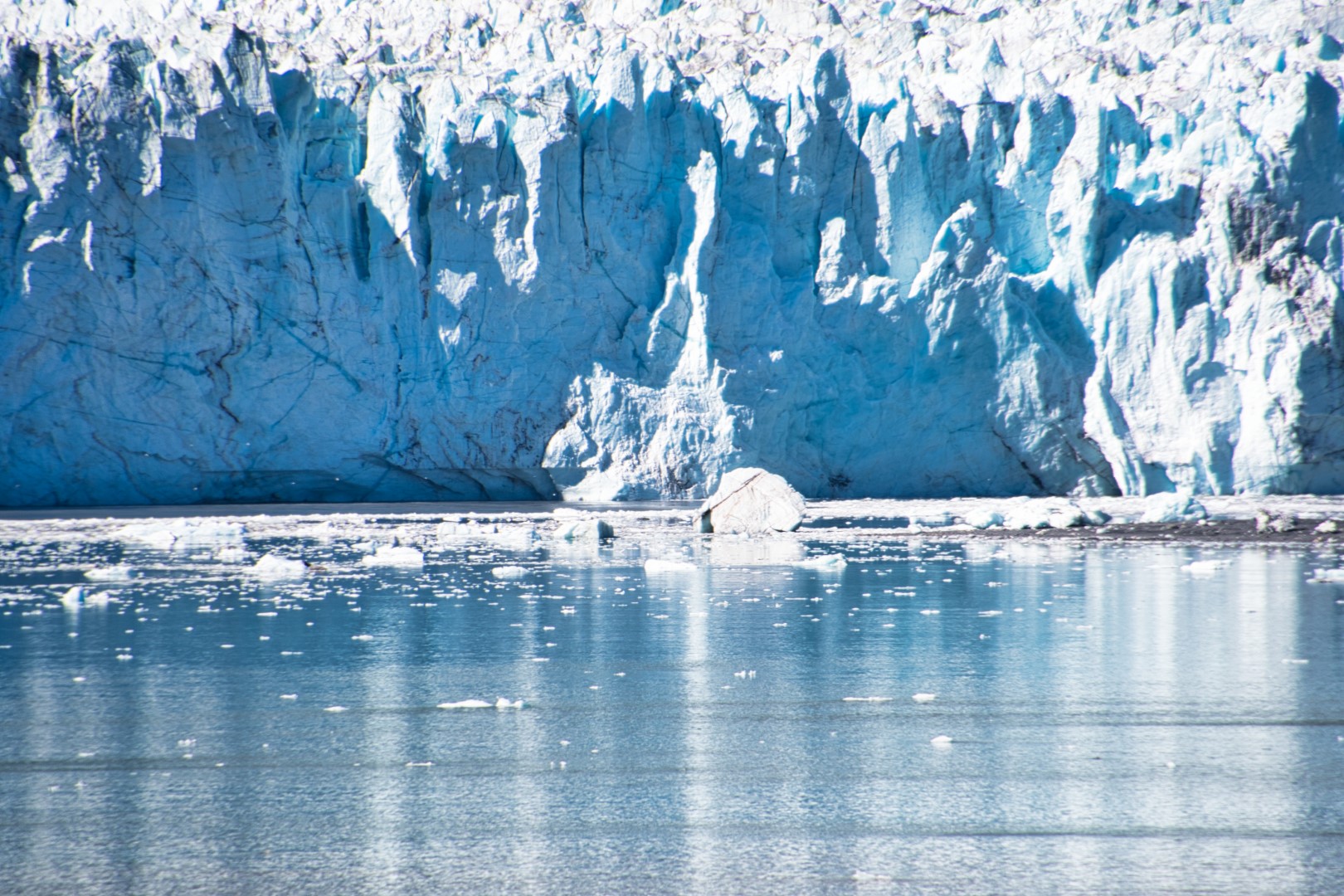
For perspective, here is a large tour boat in front of the glacier.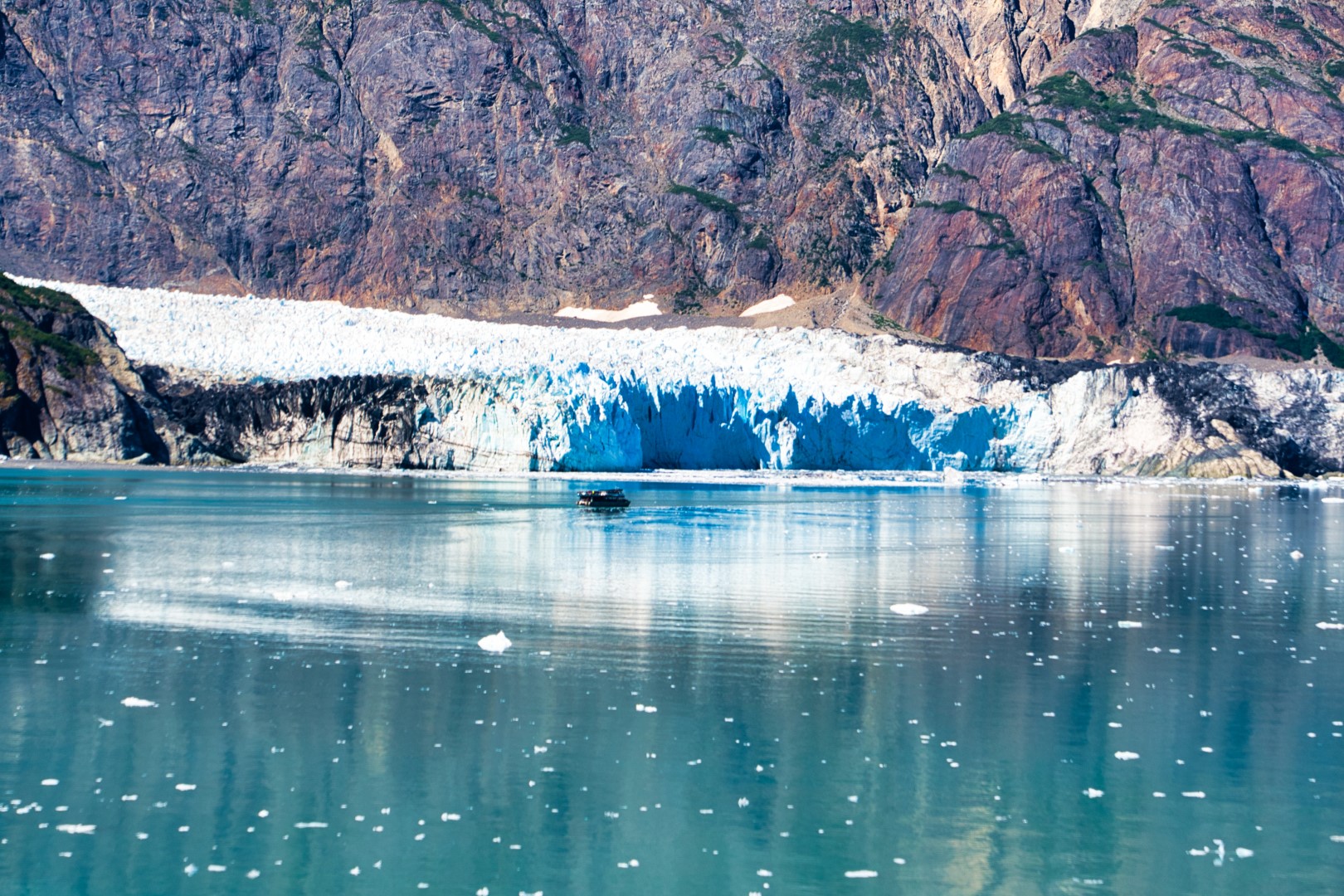



As we were heading out of the bay, we saw a raft of sea otters, and a whale (well, at least a whale tail!) Plus, there were a ton of sea lions!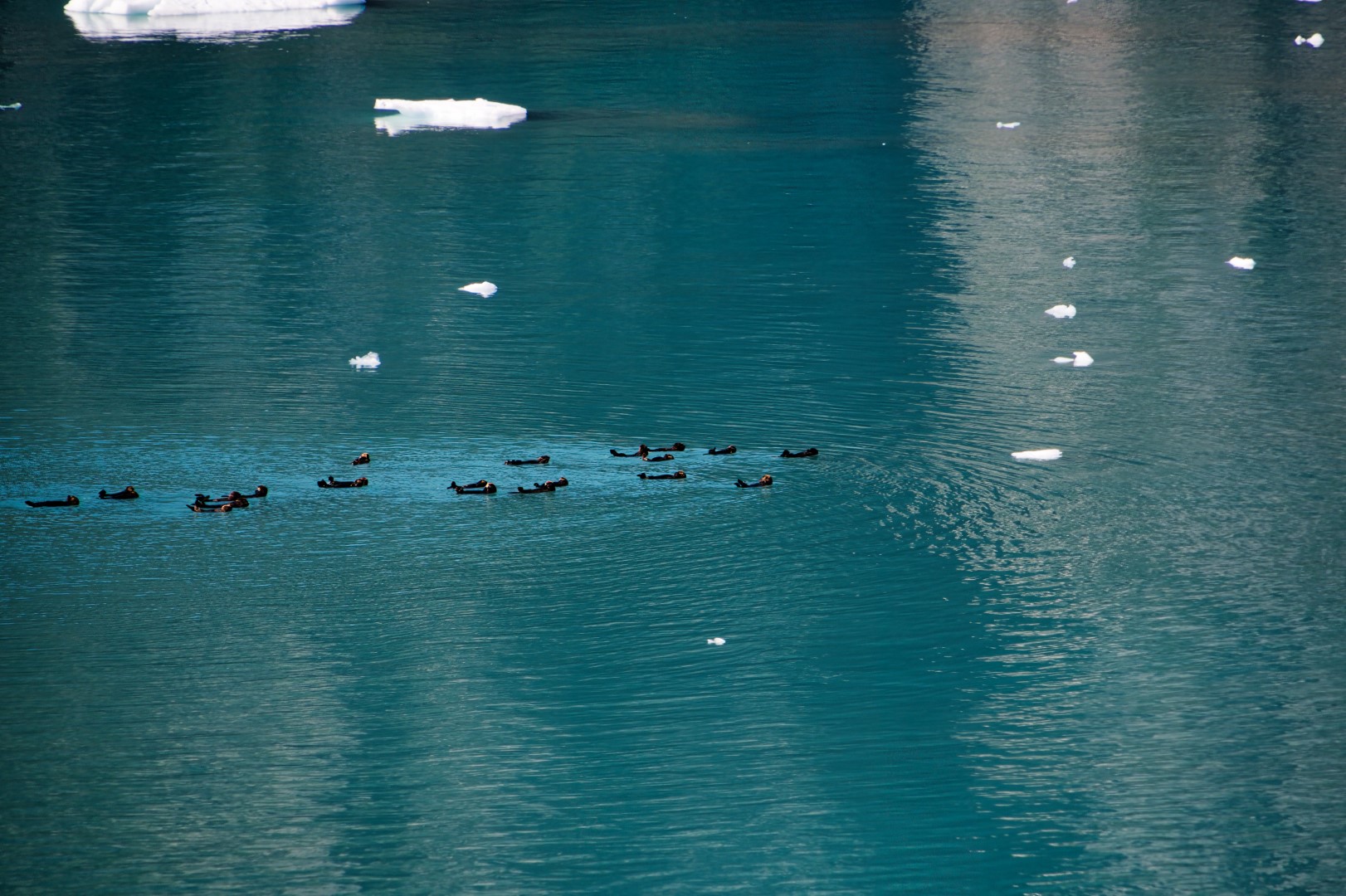


A few hundred years ago, an enormous glacier, several miles wide and several thousand feet thick, covered most of Glacier Bay National Park. In the past 250 years, that glacier has retreated 65 miles, creating Glacier Bay. (from NPS website)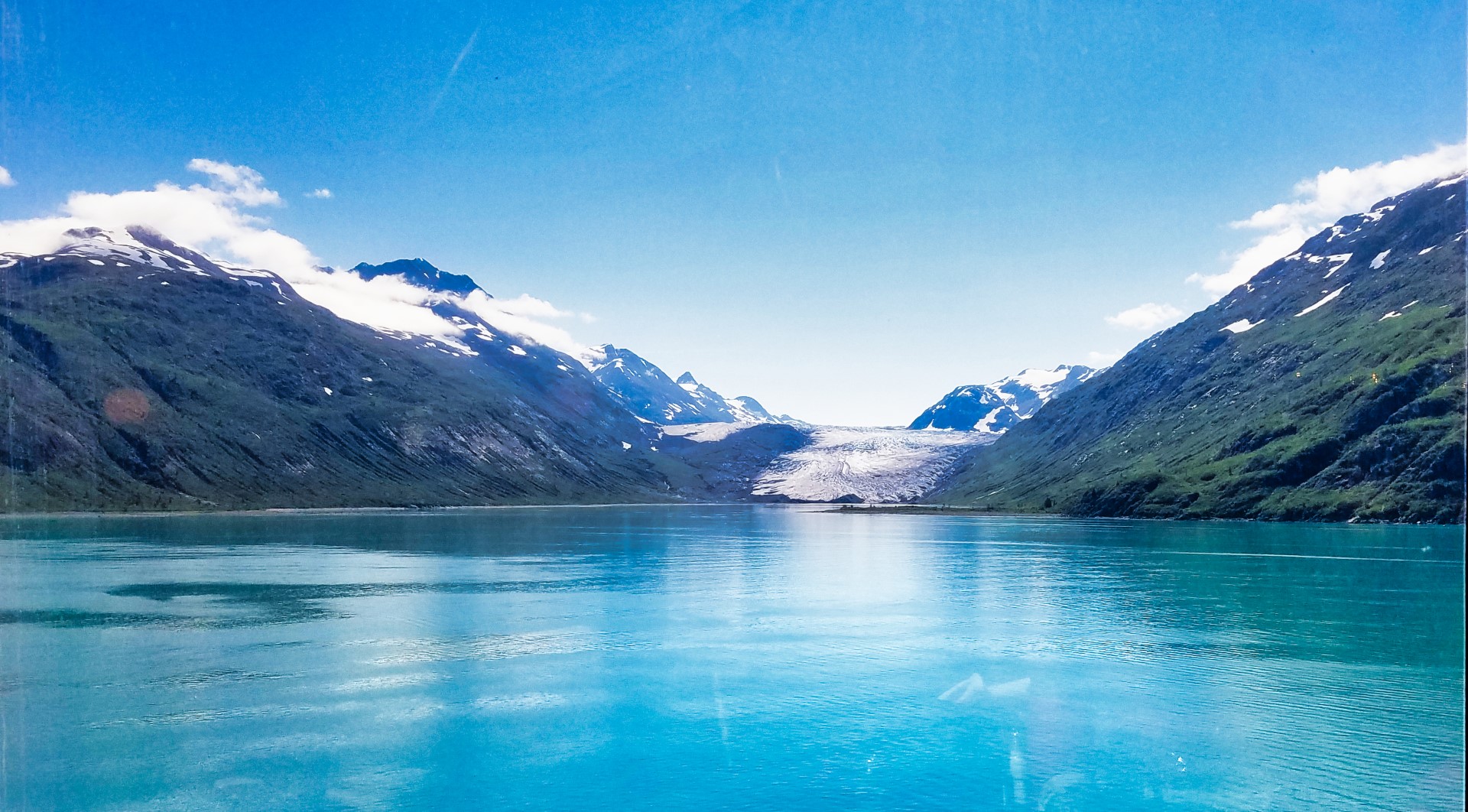

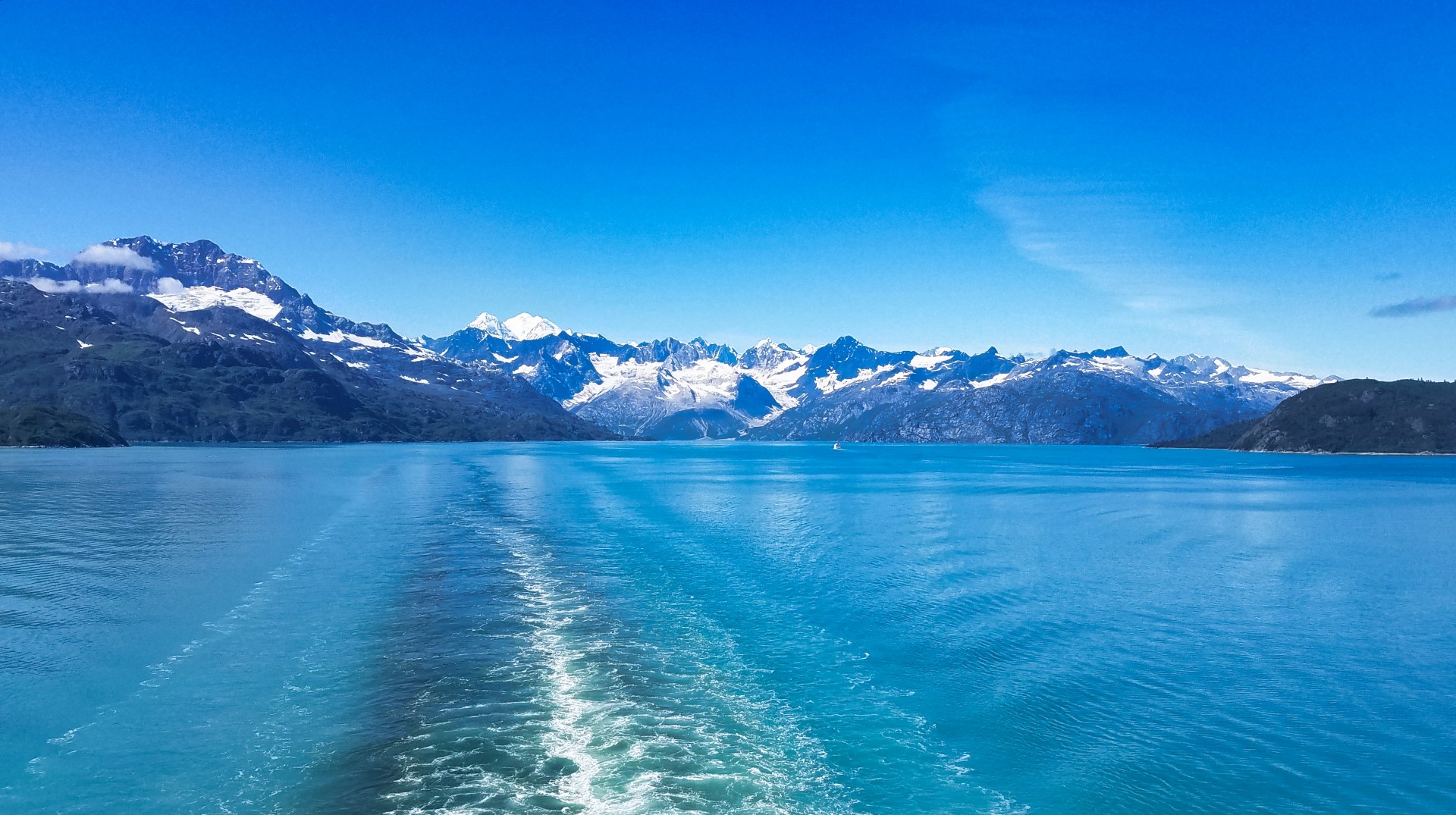
Judith/Judy here.
Glacier Bay was the day I was anticipating the most on the cruise. I was up for the 7:00 a.m. talk by the US Park Rangers, who had boarded the ship (via a moving boat) at 6:00 a.m. I wasn’t missing a thing! It was cold and windy in the early morning, but the day warmed up and was sunny and GORGEOUS! We learned later that the previous day it had been so rainy and foggy that the ships couldn’t even enter the bay. I would have been tremendously disappointed. When we arrived at Margerie glacier, the boat stopped for a long time so we could watch and listen for the resounding crack and fall of the calves. Two little ones and one big one, quite exciting! We finally had to tear ourselves away to eat some lunch, but it was mind boggling to sit next to the huge window, eat lunch and watch as we passed by multiple glaciers. I loved it! Not all cruise ships go into the bay, and the park service only allows TWO cruise ships per day. If you decide to go on a cruise, make sure that Glacier Bay is on the itinerary!
Day 9, our final day aboard the ship, we toured College Fjord. Unfortunately, this was the one day that the weather really did not cooperate. So we mostly hung out inside the ship. Food, food, and more food!
Day 10 – The next morning we disembark from the ship in Whittier to begin the land portion of the trip.
Next Post: Alaska Cruise — Part 2
Previous Post: Volunteering at Ottawa National Wildlife Refuge— June 2022
